Mexico City (CDMX) is a food lover’s city, incredibly rich in its diversity of food and food culture. While I have not had the pleasure of living there, my husband and I met in language school 30 years ago in Cuernavaca, an hour outside of CDMX. For years we have returned to see friends, always lingering in the capital for a day on the front or back end of our visit.
There is so much to love about CDMX: at the top of my list is the fact that the big meal of the day is lunchtime, which usually starts at 2 and then lasts for 3-5 hours. You could literally eat from lunch right into dinner service and then go out dancing.
I also love that the subject of food is elevated to that of religion. David Chang said as much on his podcast The David Chang Show that, “[In Mexico City, the topic of] food feels like a sports team”; it is easy to find yourself in very intense conversations about something as simple as what kind of taco to eat, and when to eat it.
In addition to world-class dining, CDMX has an array of large public parks, chic boutique hotels, hip neighborhoods, and an excellent shopping scene that rivals that of European capitals.
It is possible to get a small taste of CDMX in a three-day trip, but just know that your first visit will surely have you yearning for more. I have compiled a Mexico City Guide from our most recent visit in early 2023, plus a few that I would like to see on our next visit. Take a look at my Mexico City Guide and lmk what is on your CDMX list! xoM
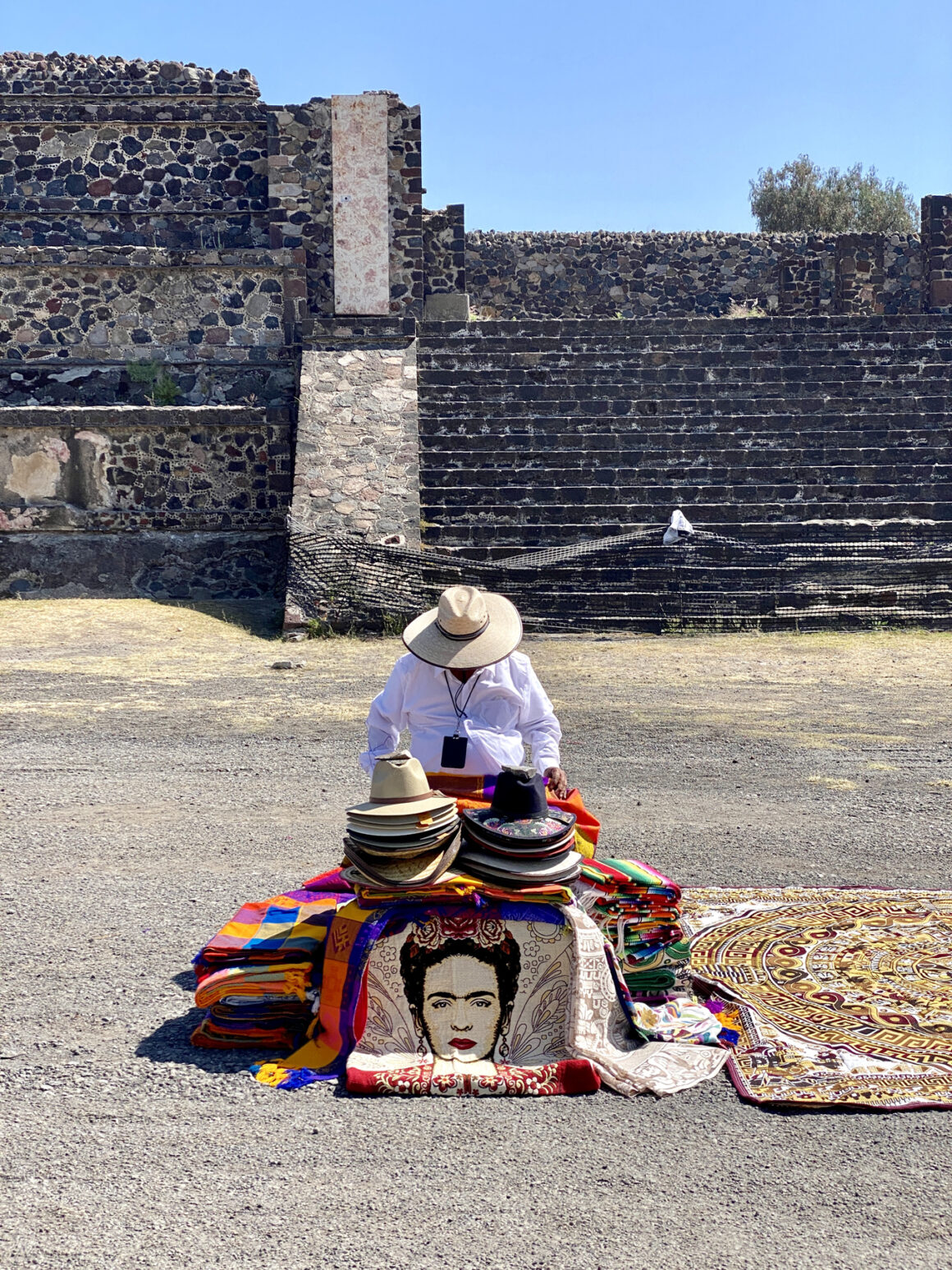
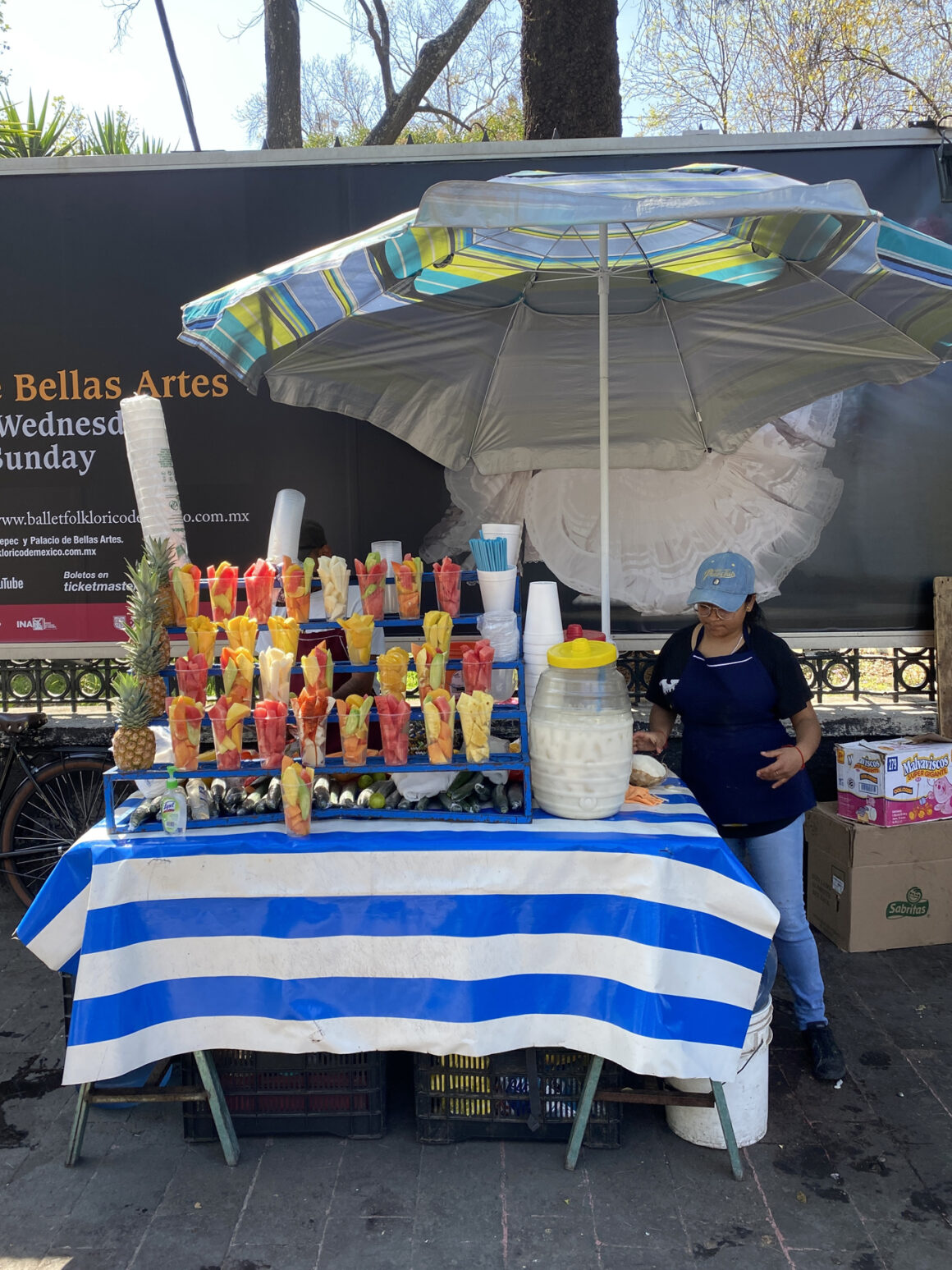
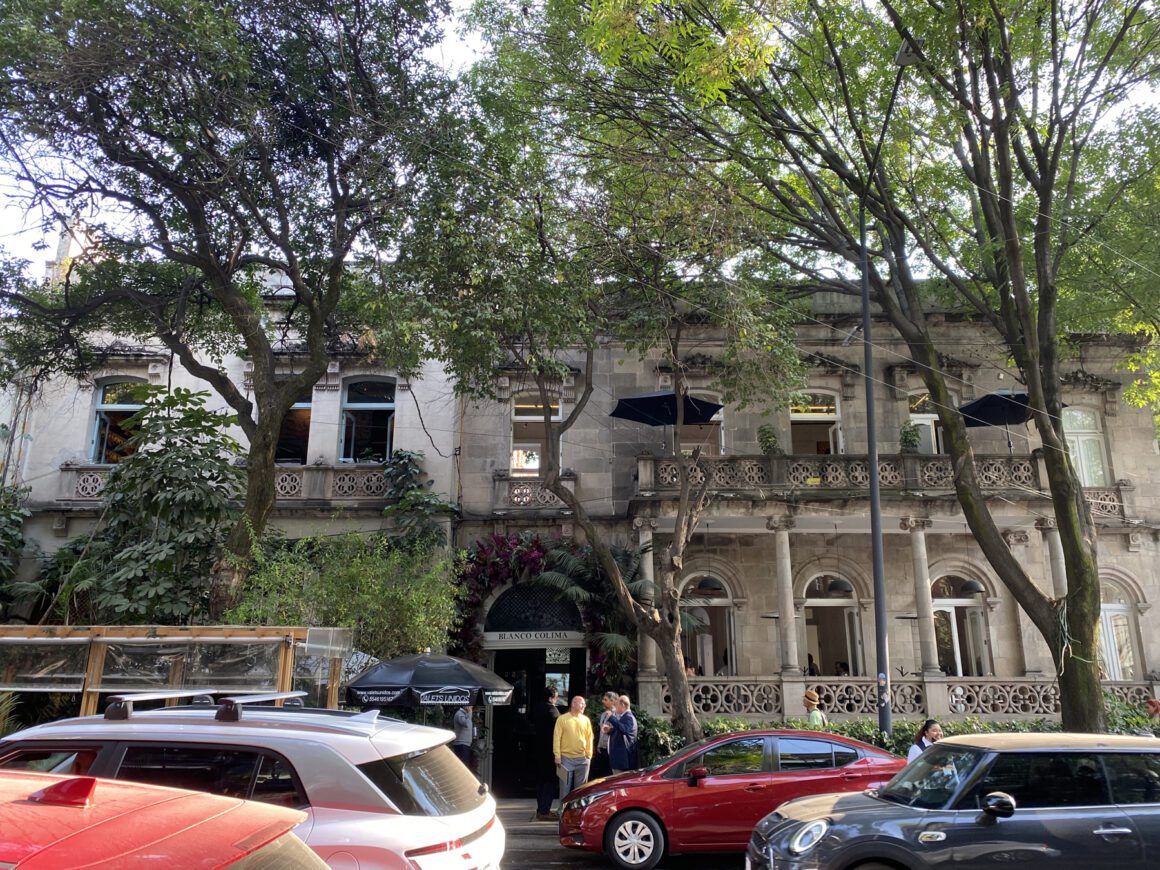
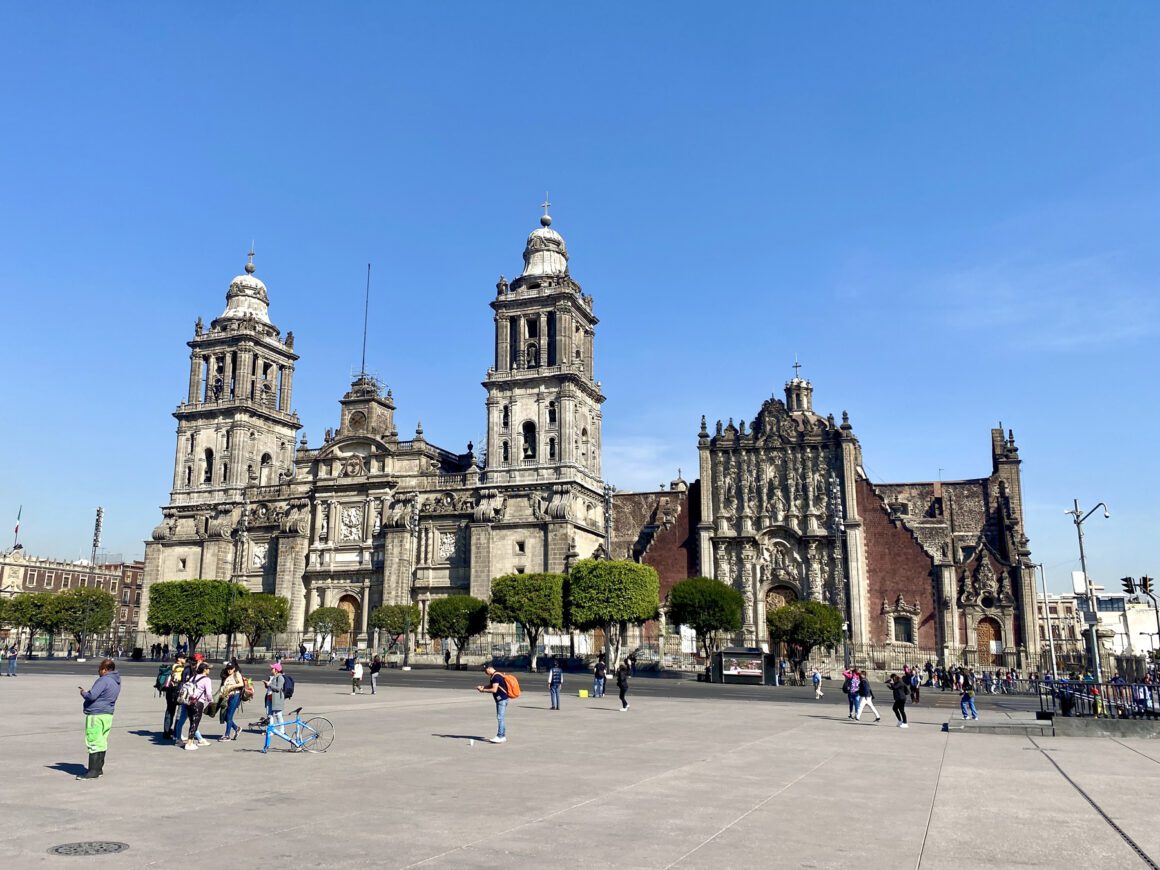
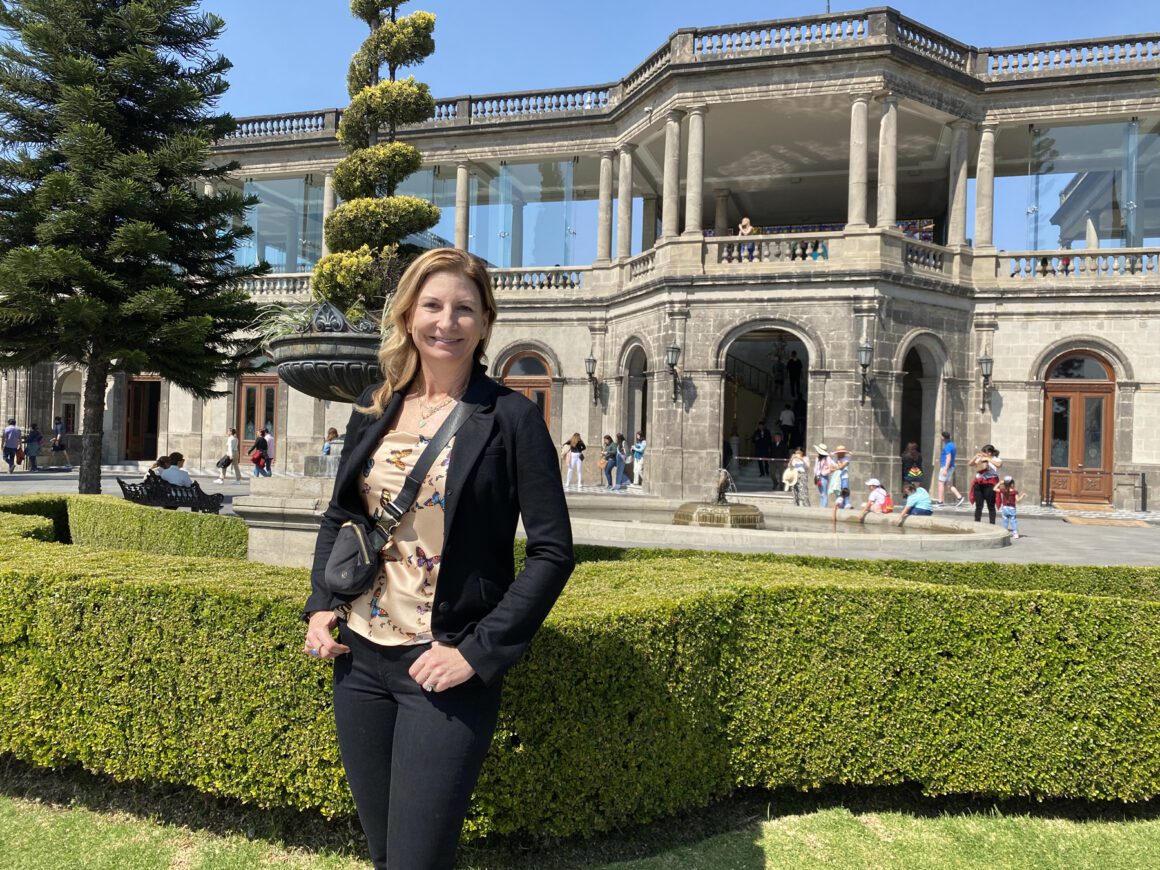
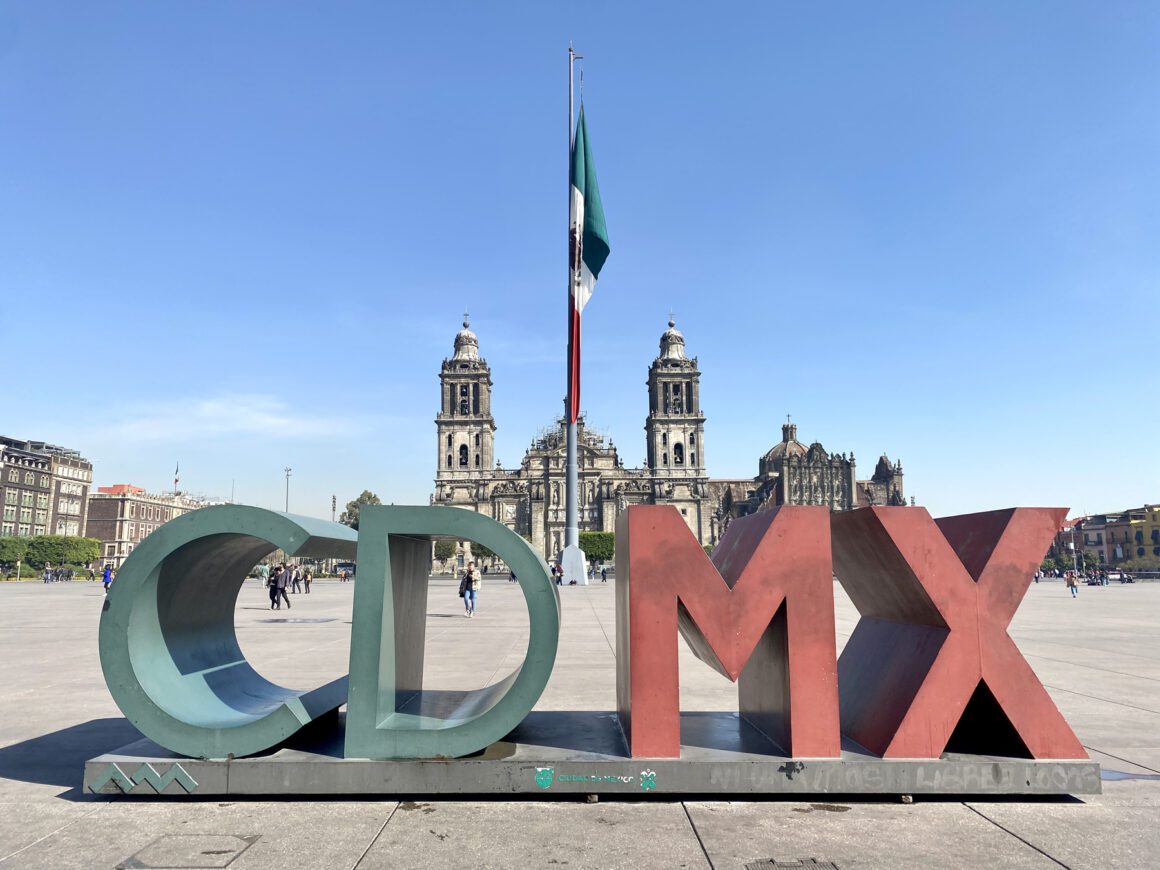
Restaurants:
Since Mexico City is a food lovers city, my Mexico City Guide will start with food, and namely the restaurants we just visited (and yes, we hit all of them in just a 72 hour period!):
Pujol. Chef Enrique Olvera opened Pujol in 2000 and twenty-three years later, it is still the gold standard of dining in Mexico City. Serving innovative twists on beloved Mexican dishes, Pujol’s kitchen is currently run by Jesús Durón. Its location in Polanco in a sleek, minimalistic home, Pujol and its cuisine are surprisingly approachable yet sophisticated, casual yet smart, a representation of Mexican culture and fine dining without really being fine dining.



The menu is simple and wildly inventive; case in point, you eat many dishes with your hands. The dish for which he is most famous (and featured on Chef’s Table) is the 3011 Day Mole. I say 3011-day because the day we were at Pujol was their 3011st day to serve the mole. Think of it like a sourdough starter: Olvera has a “mother” mole which he has had from the first day of service and to which he adds every day with a new mole. The dish is served simply with the mother mole ladled onto the plate, topped with the new mole. The beauty of this dish is that it is in and of itself a paradox: it is a constant but changes every day, literally and figuratively.
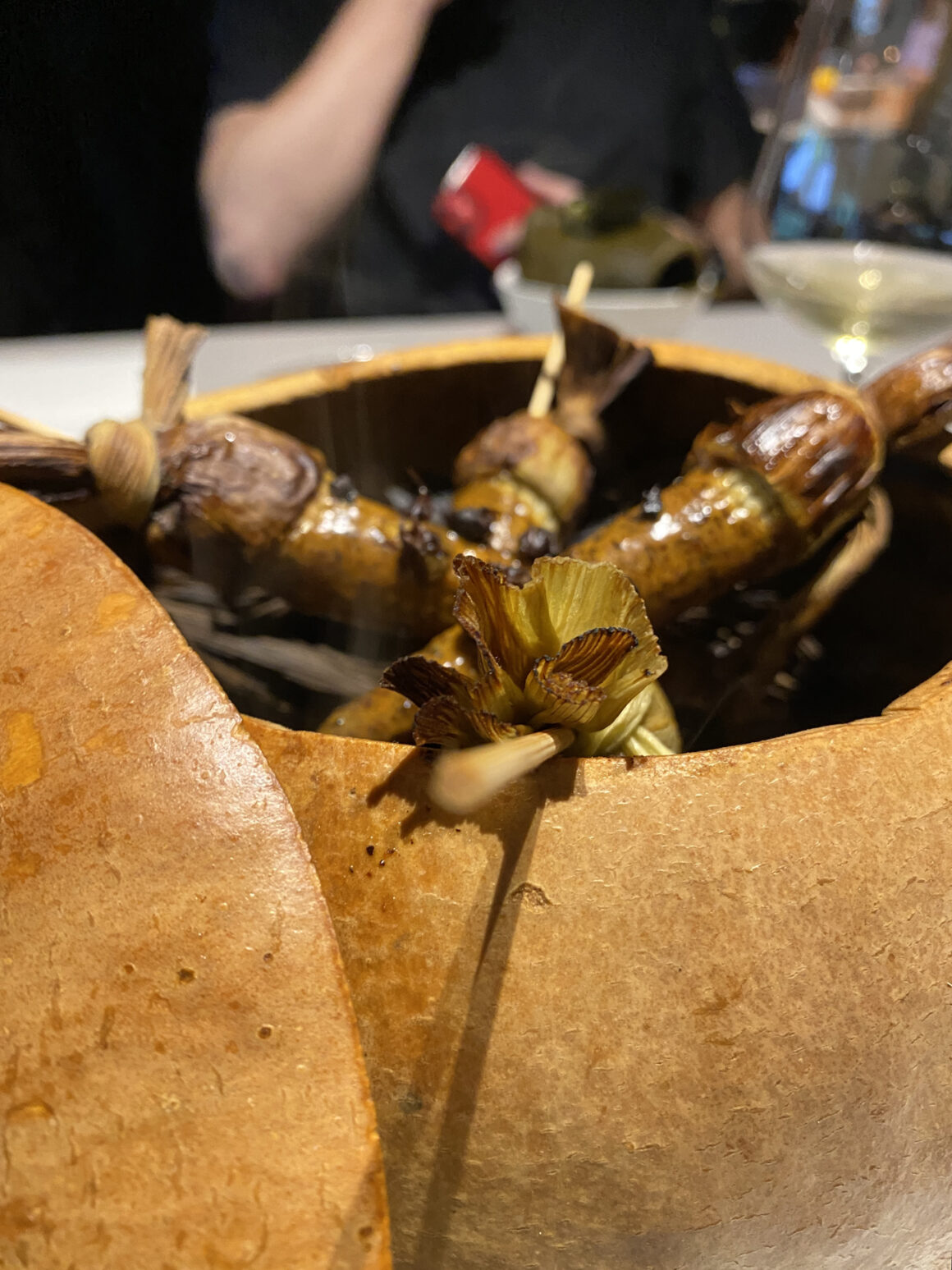
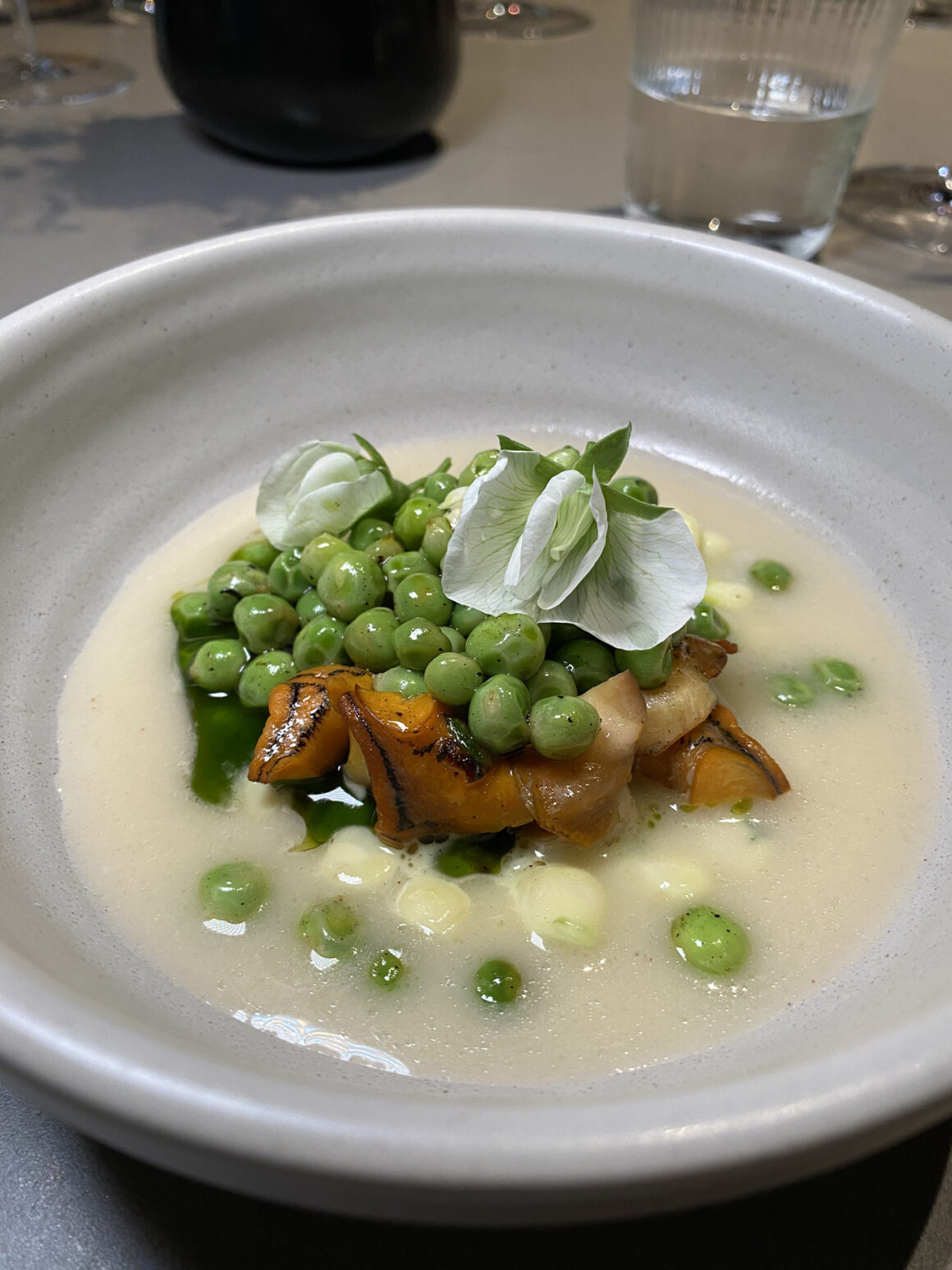
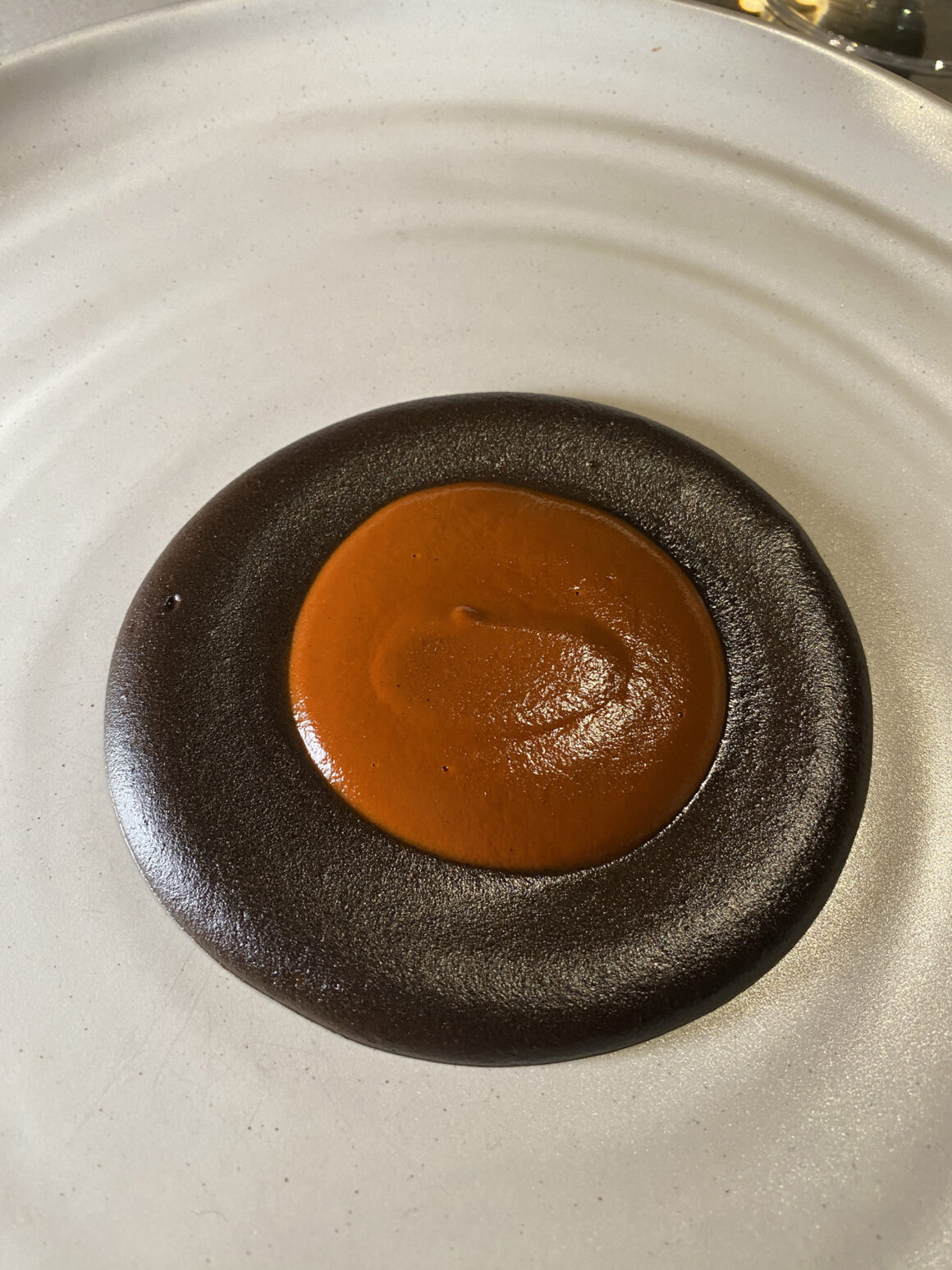
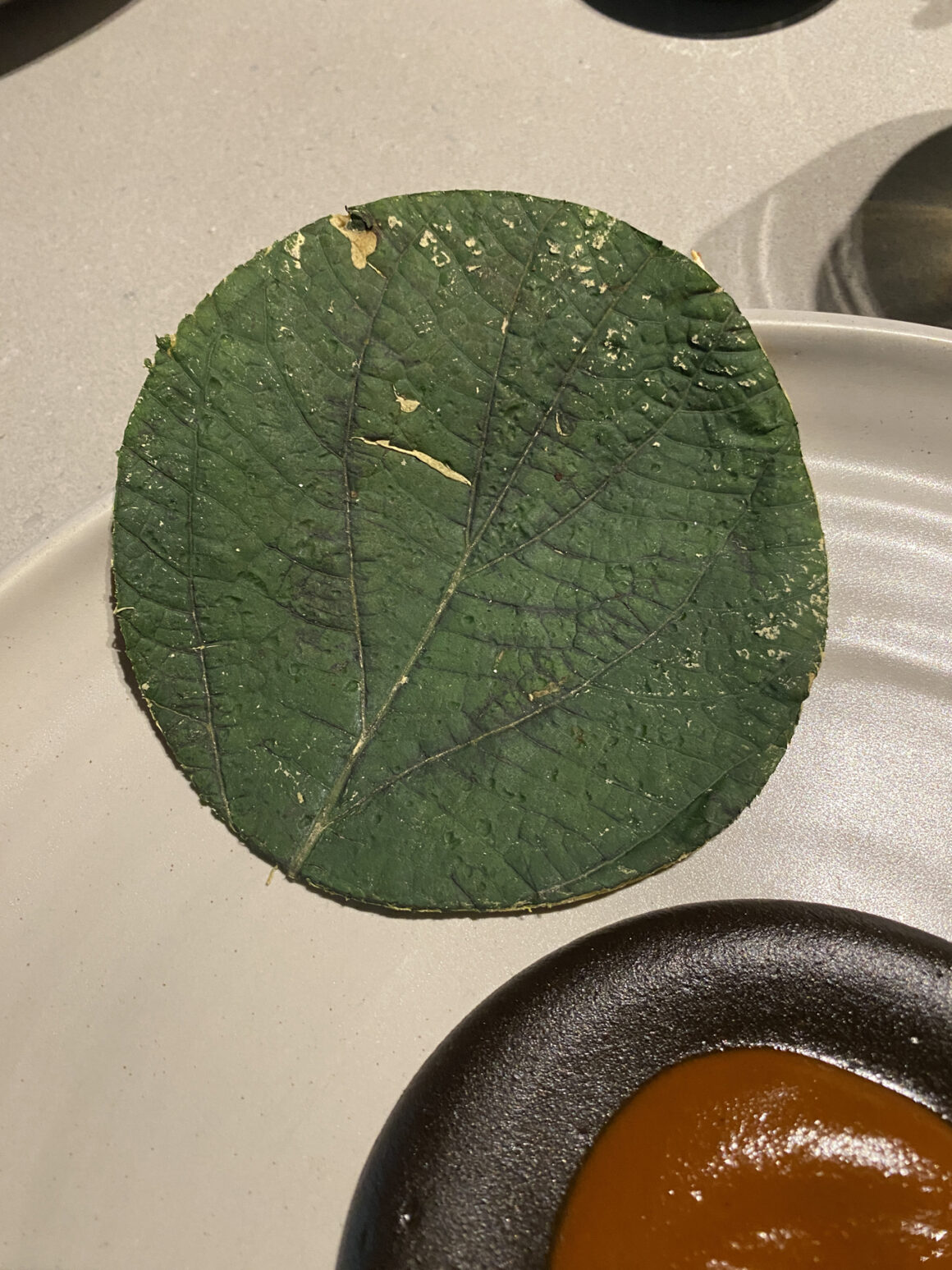
Quintonil. Quintonil is run by husband and wife duo Jorge Vallejo and Alejandra Flores. As one of Olvera’s first protégée’s (and I understand also did a stint at Rene Redzepi’s Noma) Vallejo struke out on his own and, along with Flores, landed Quintonil firmly on the world’s top 50 restaurant list alongside Pujol. The cuisine at Quintonil—so named for an herb featured throughout the 8-course menu—plays to the history of Mexican culture and cuisine. Every dish is perfectly executed and plated, and the Mexican wine from Rivero Gonzalez Winery in Parras-Coahuila is stunning.
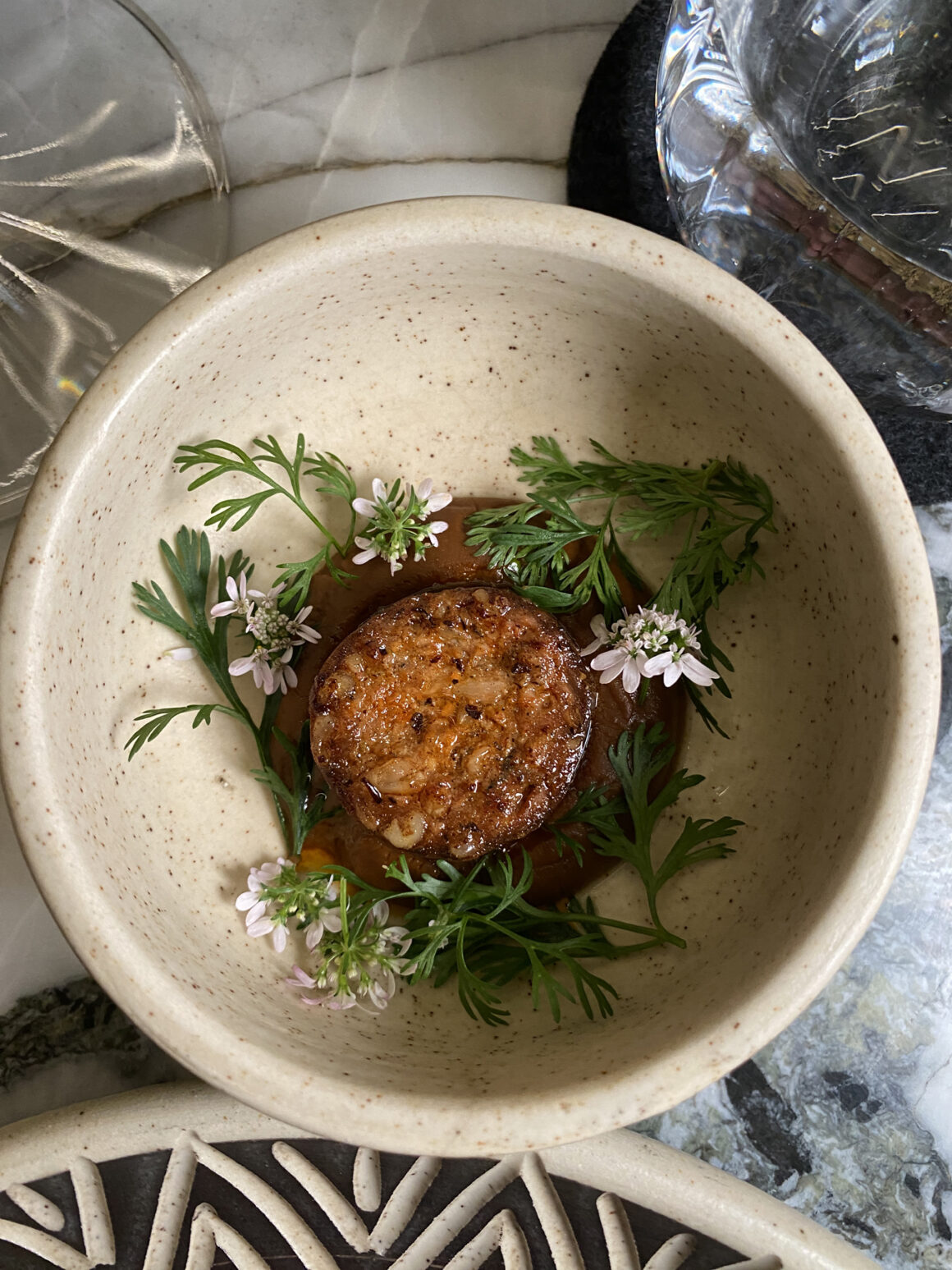
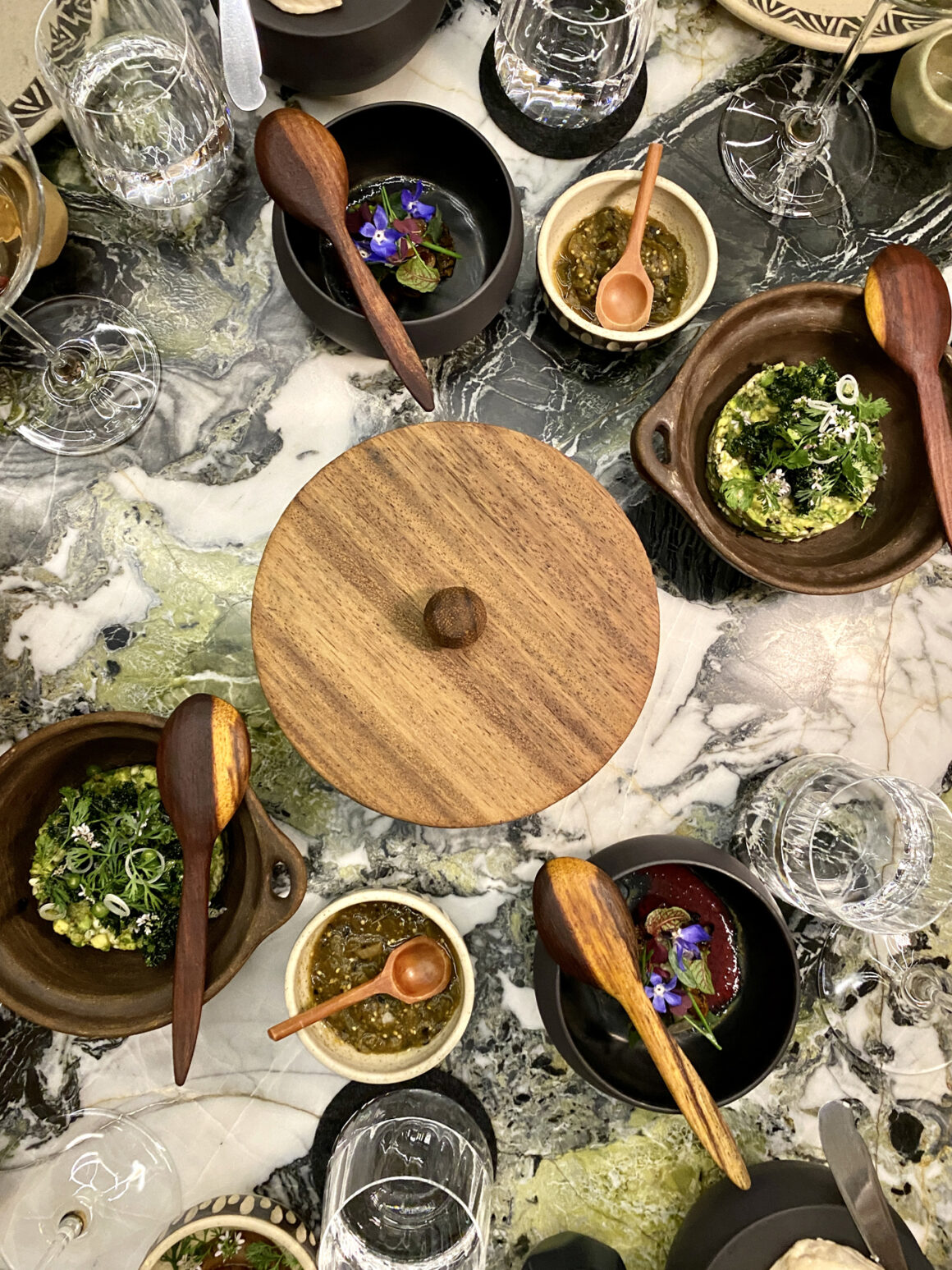
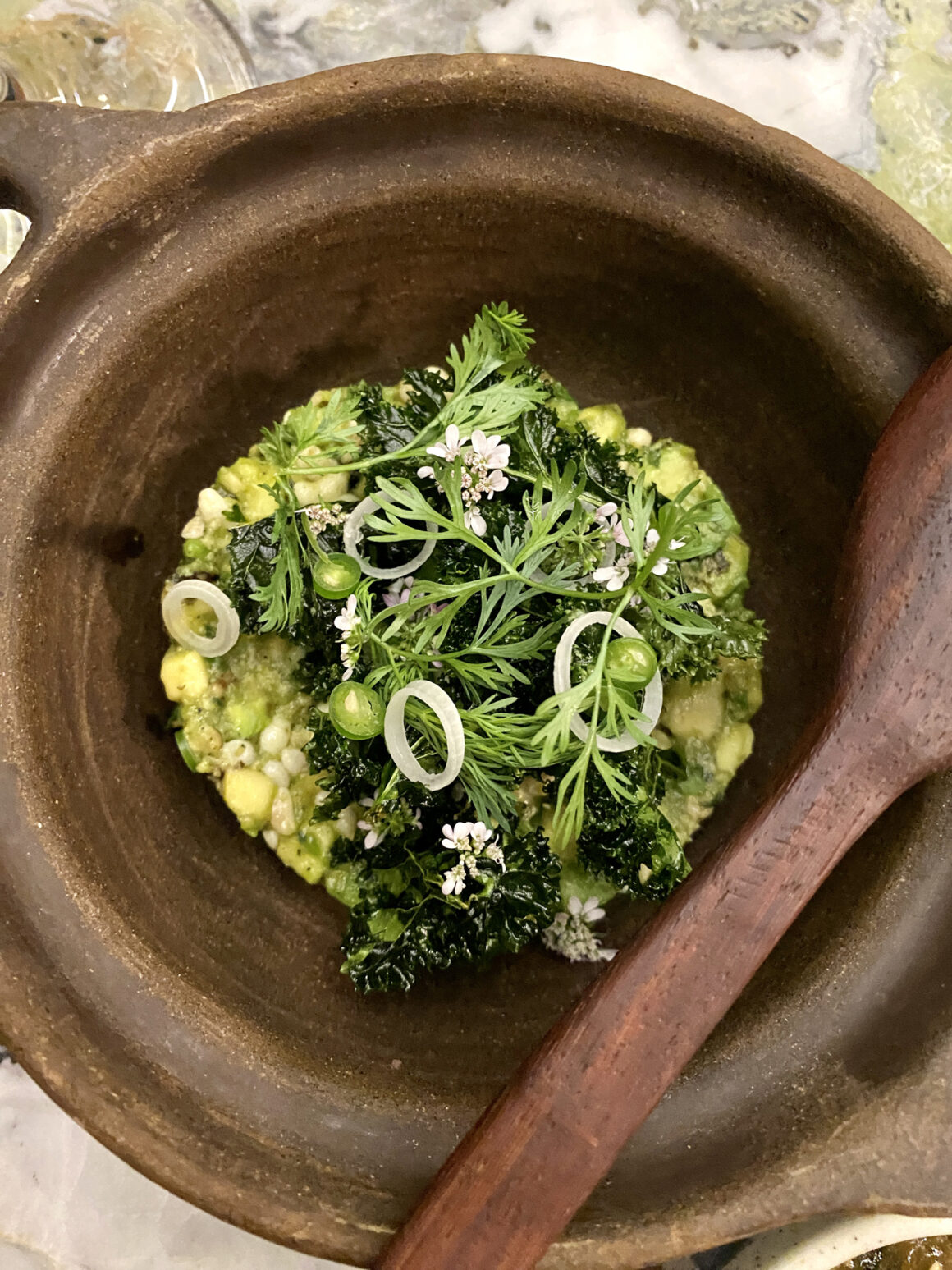
Azul Condesa. I love Azul Condesa, a restaurant that specializes in Oaxacan dishes. Definitely stop by for either breakfast or brunch to take advantage of the hot cocoa cart, an à la carte experience featuring this iconic spice that originated in pre-Colombian Mexico. I chose the Chef’s Special Selection of traditional cacao with vanilla and ginger to pair with my Oaxacan Mole Enchiladas, while Hubby chose the spicier Ancho Chile Cacoa.
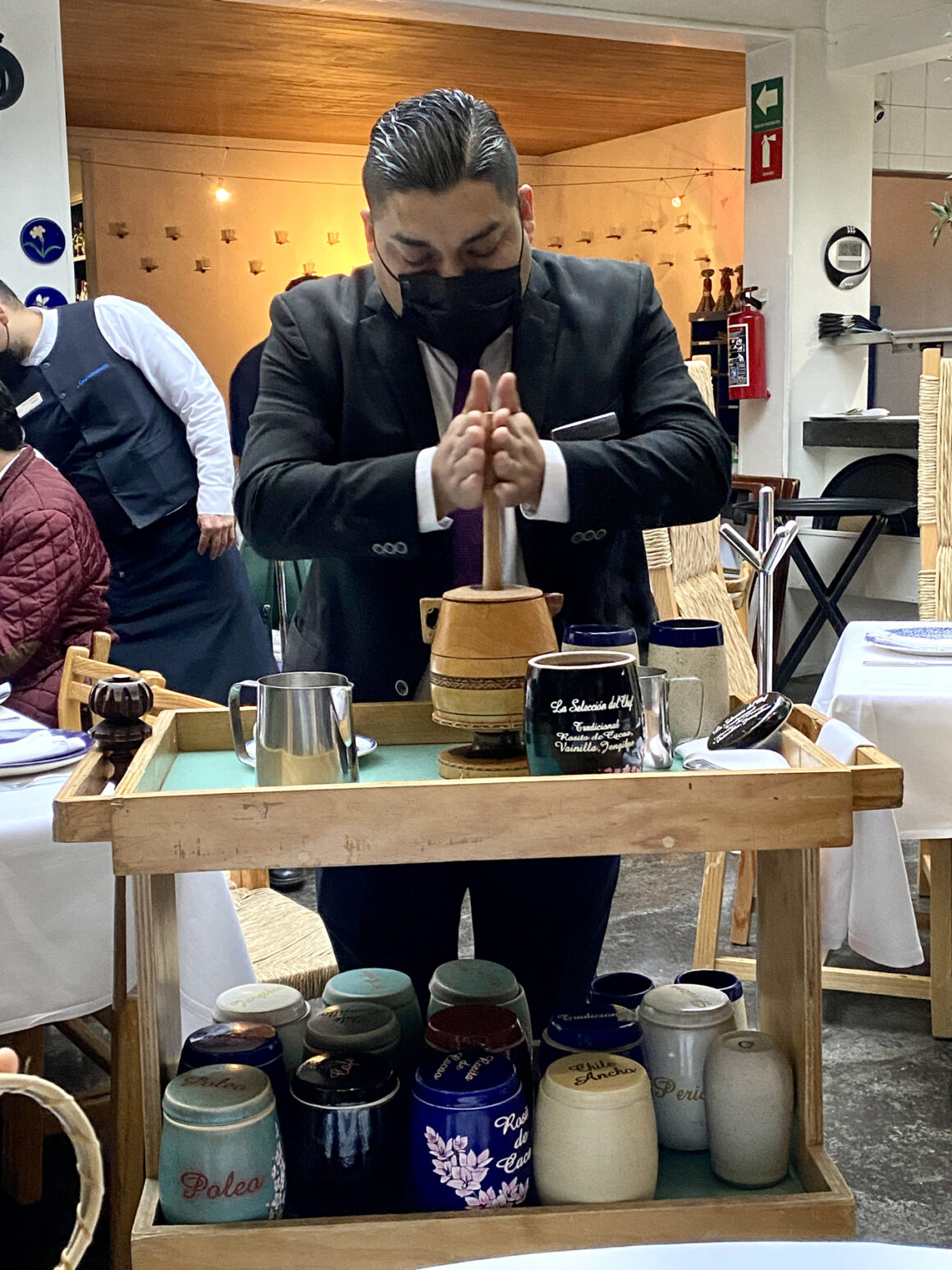
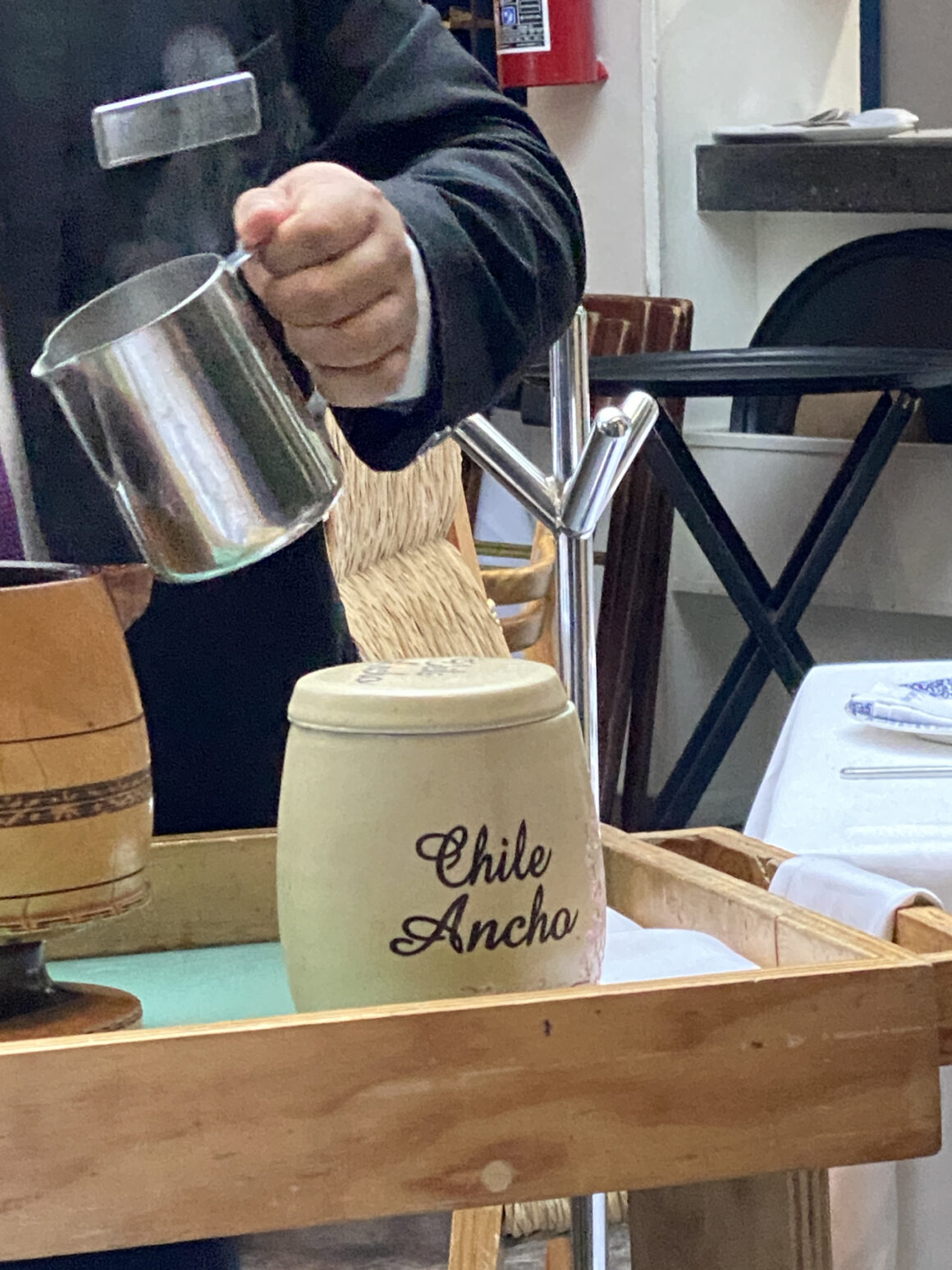
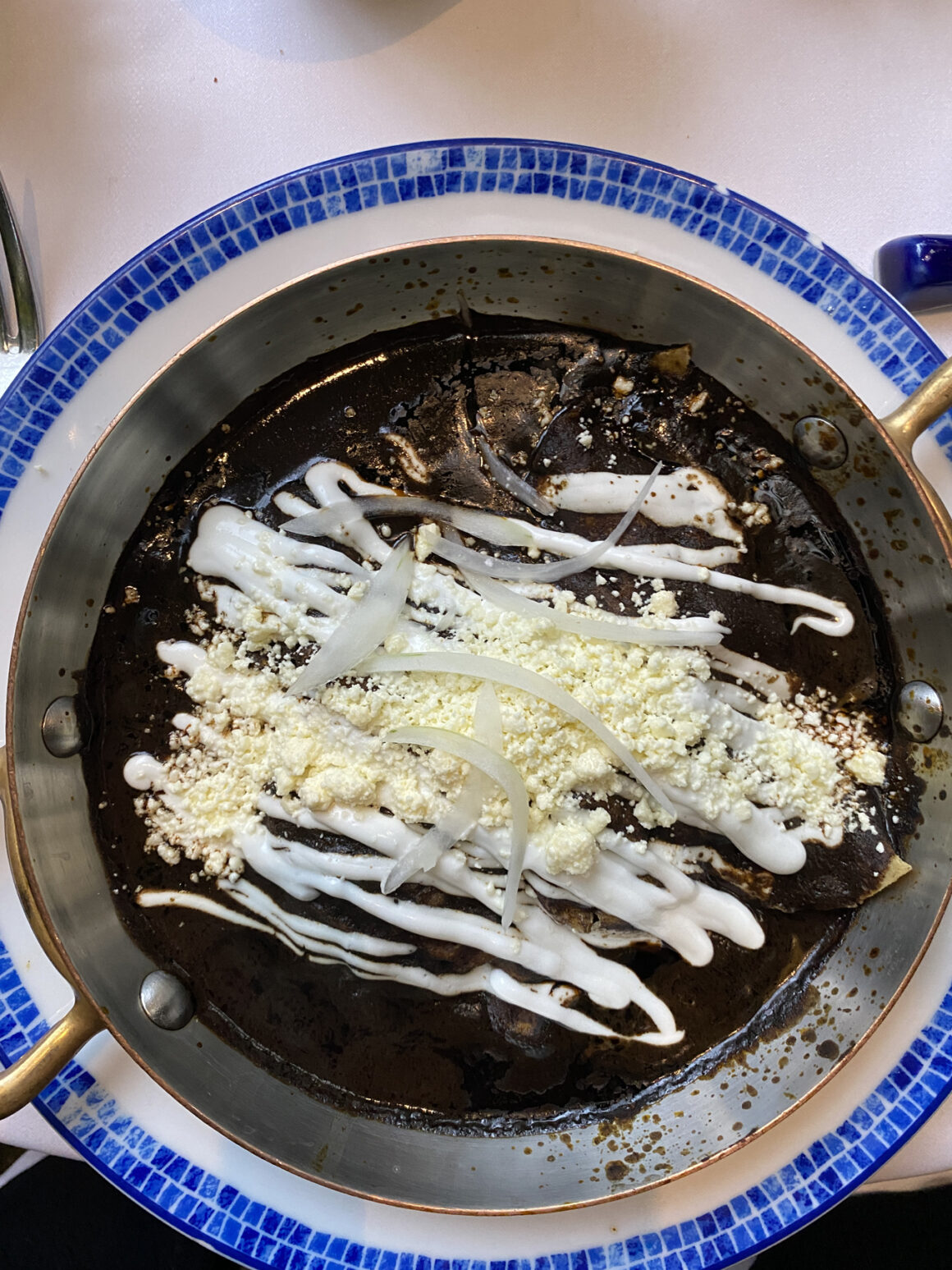
I am also obsessed with the tortillas at Azul Condesa. I have read they are called tortillas ceremoniales (ceremonial tortillas), or tortillas pintadas (painted tortillas). First produced by the indigenous Otomí people of Mexico’s Guanajuato and Querétaro states, tortillas ceremoniales are traditionally made for special occasions like Día de los Metros, weddings, and holidays. A special tortilla press (sello) imprints intricate patterns (like hummingbirds) onto the tortillas in a natural, edible dye, such as Mexican honeysuckle or hibiscus, or from insects like cochineals. One more interesting fact from our friend and well-known food writer and photographer, Adalberto Rios, is that tradition dictates that one can not buy a sello; it must be gifted to you.
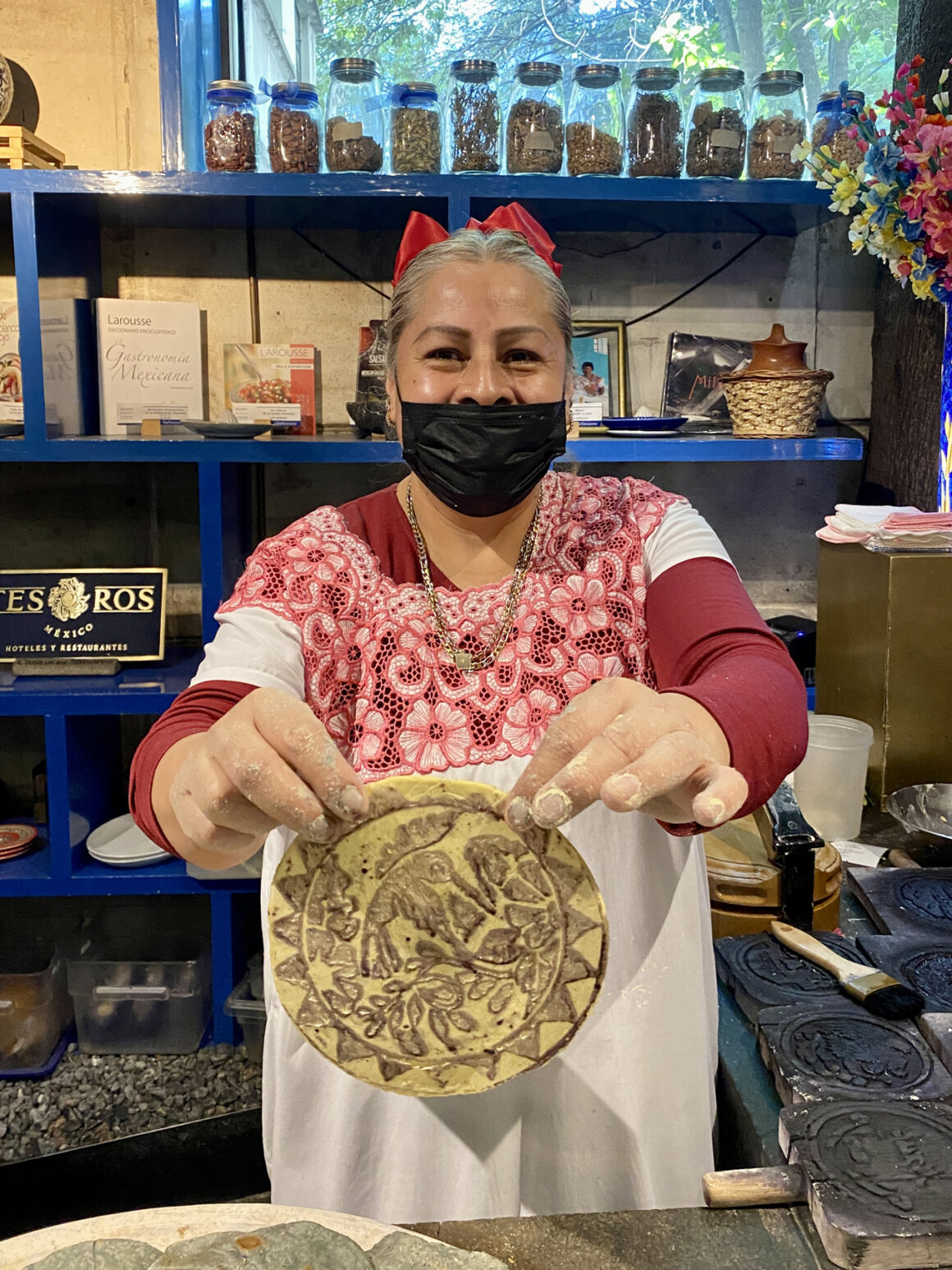
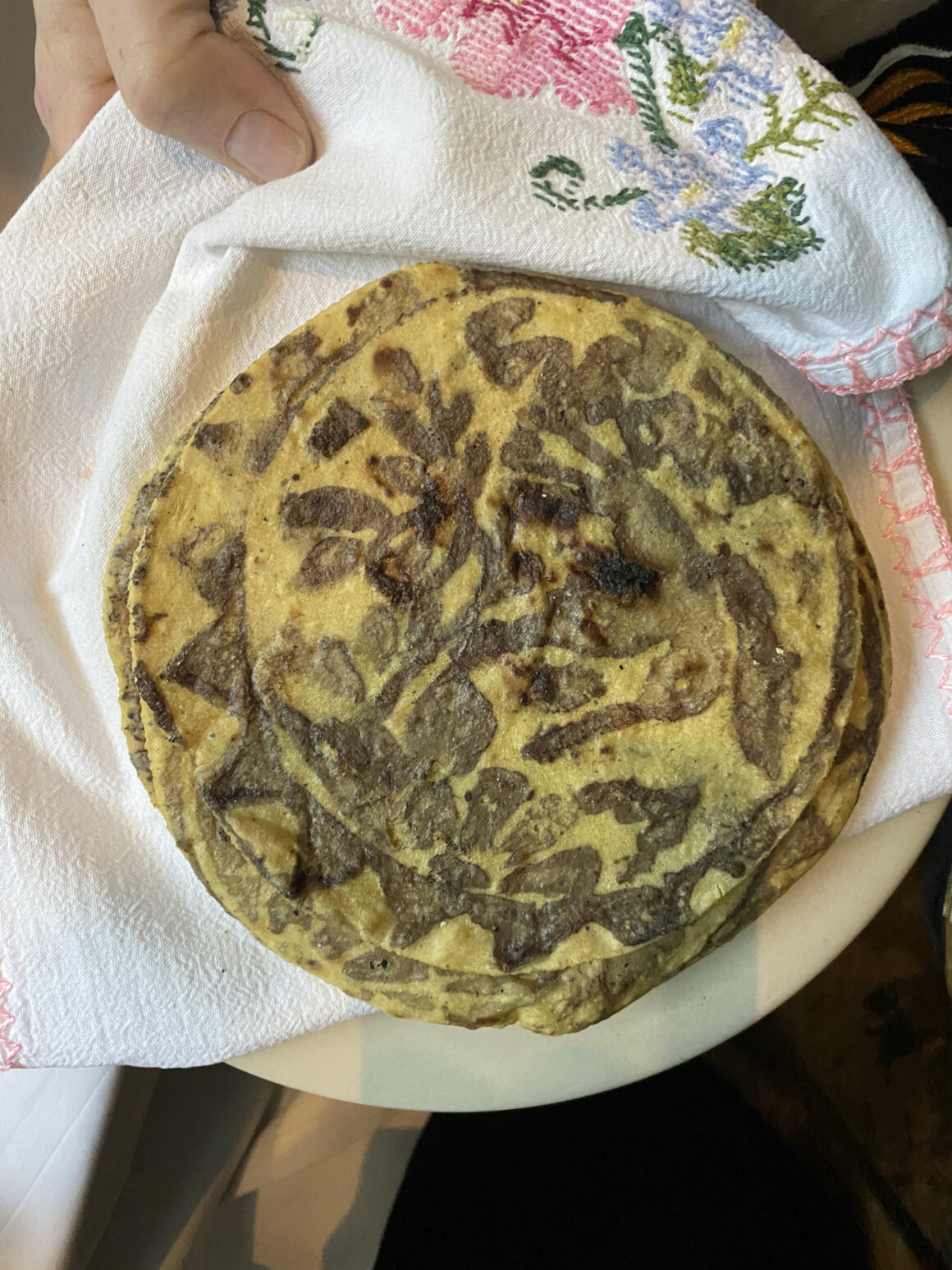
Máximo Restaurant. Opened in 2011 by Eduardo Garcia and wife Gabriela Lopez, Máximo serves a global menu using local, sustainable ingredients. When I walked in and saw an Iberian ham leg being expertly sliced, I knew we would be in for a treat. We pretty much whiled away a Sunday afternoon here (what’s new?) and did not feel in the least bit guilty. Start off with one of their craft cocktails (BTW Mexico City’s cocktail scene is off the hook) like the Macadamia Mai Tai, which was perfectly balanced with a mild sweetness from macadamia syrup and tart from plenty of lime juice. We also loved their take on a Caesar Salad with Head Cheese, Octopus Ceviche, and Organic BBQ Fried Chicken.
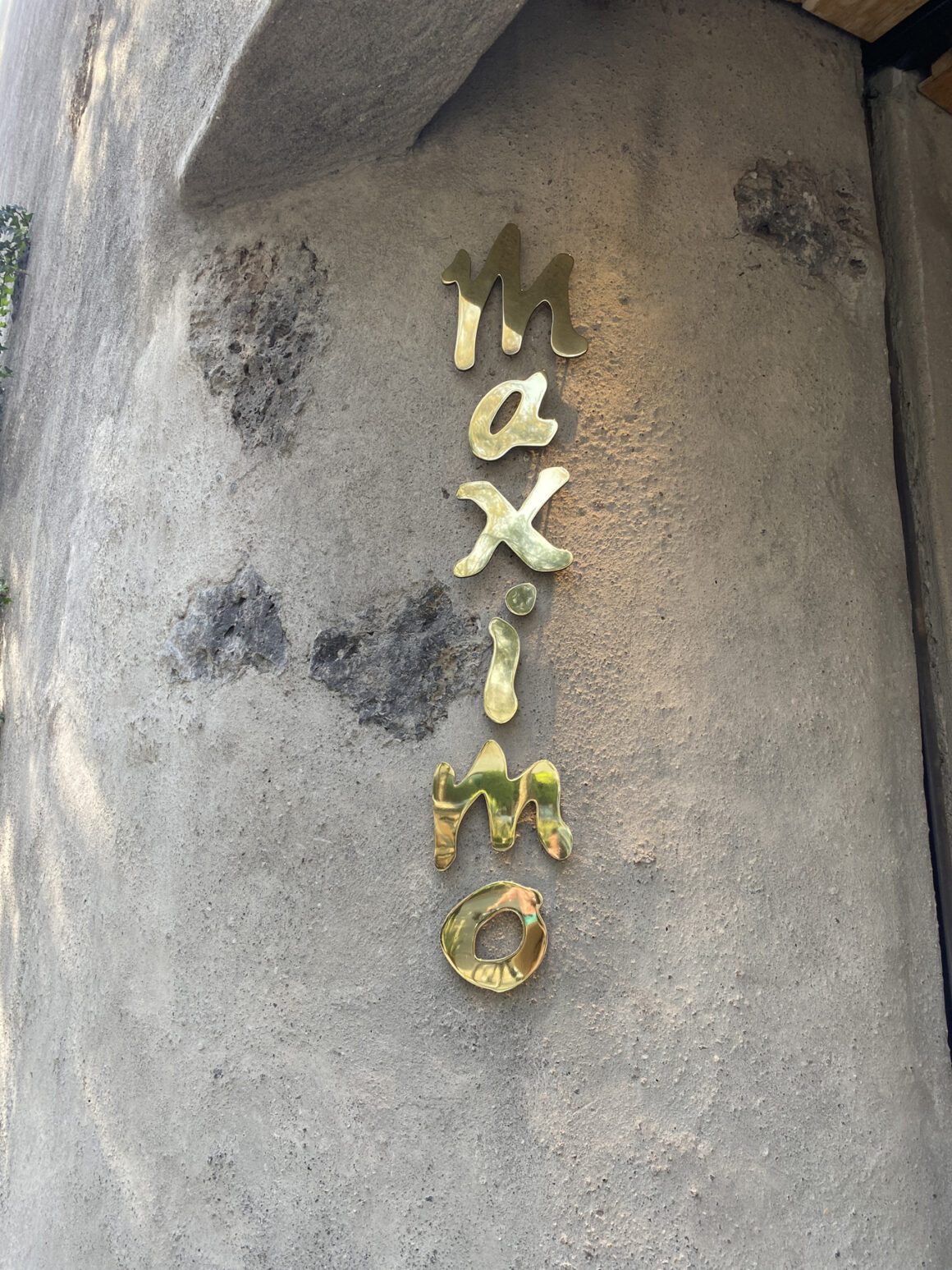
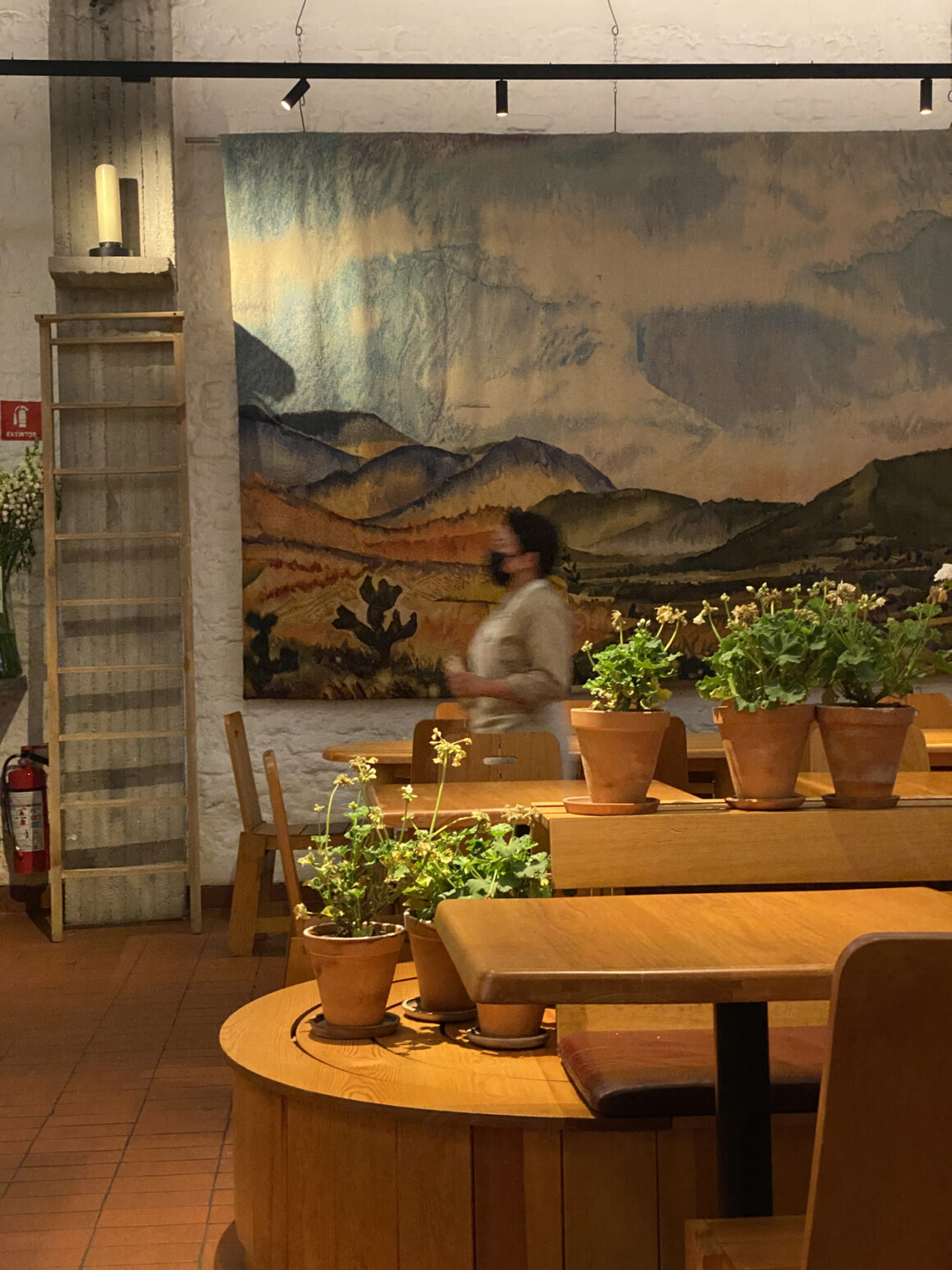

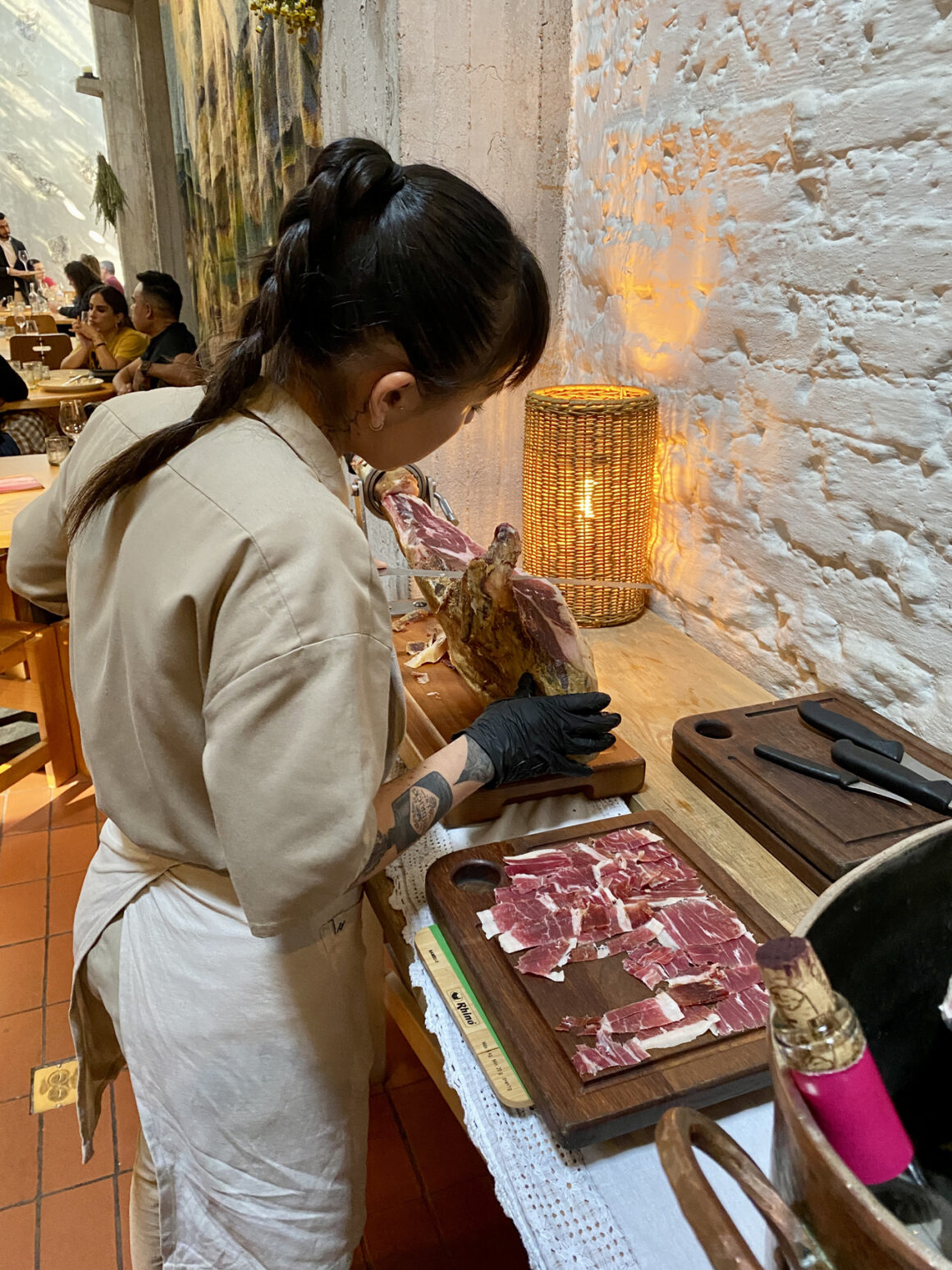


El Tigre Silencioso. Located in the Roma district inside Casa Balta, a stunning Porfirian building, El Tigre Silencioso is the latest from celebrated chef David Castro Hussong (of Fauna fame in the Valle de Guadalupe). Described as a “gourmet cantina” because of the wonderful tapas-style dishes that are meant to snack between drinks, El Tigre’s interior is casual yet sophisticated with a hip cantina vibe. Definitely try the Cerdo y Shiitake, a delectable pork and mushroom dish that will have everyone fighting over the last bite. I also loved my cocktail, La Tigresa, which was simply house sparkling wine with orange bitters.


El Auténtico Pato Manila. There are a couple of locations for El Auténtico Pato Manila and one happens to below El Tigre Silencioso on your way to the baños. Definitely pop your head into the little shop and grab a couple of Peking Duck Tacos…you will thank me later!
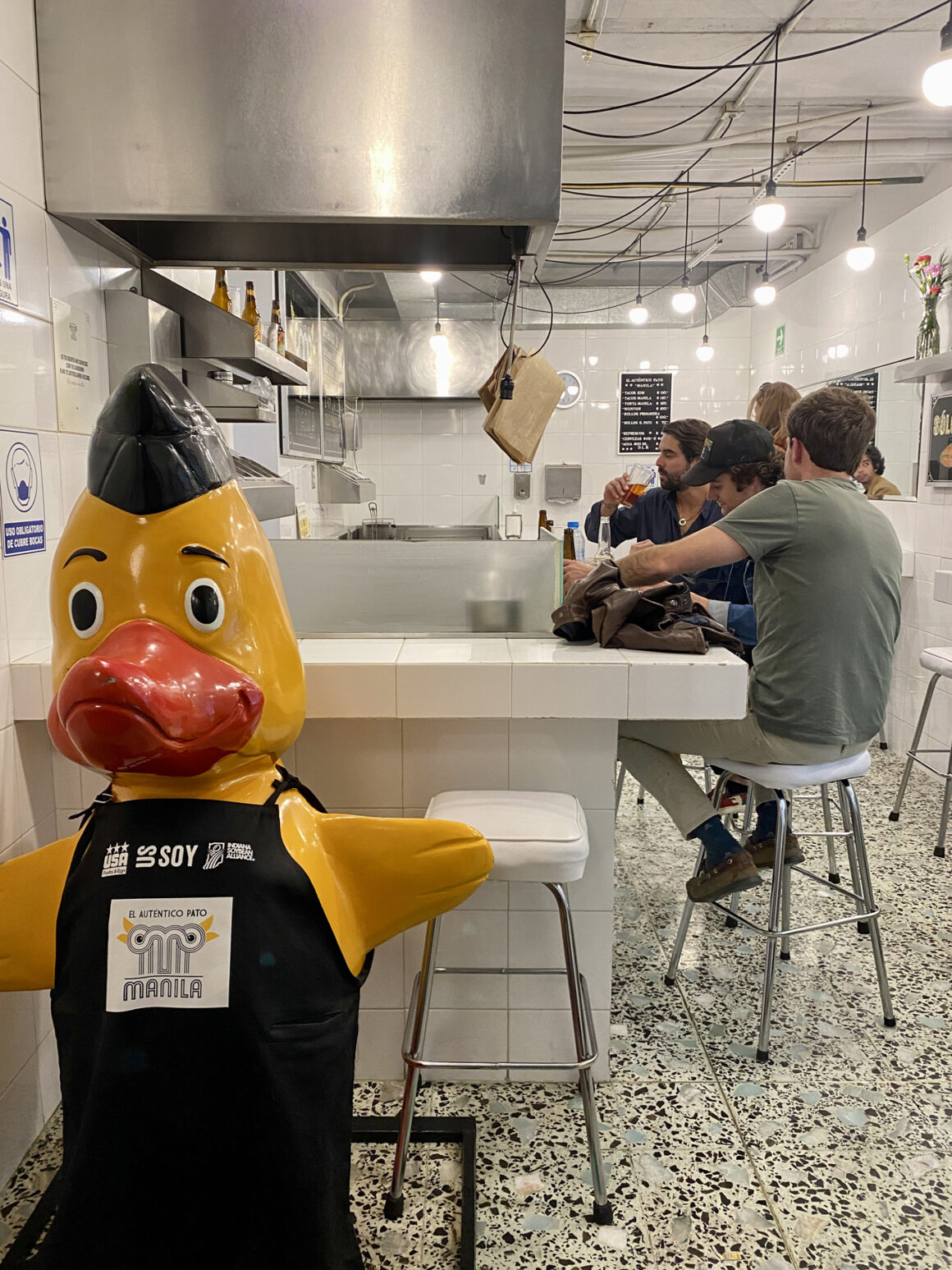
El Balcón del Zócalo. How many times have you suffered through dishes that were ‘meh’ at best while enjoying some of the world’s most spectacular vistas? Fortunately this is not the case at El Balcón del Zócalo. Situated on the roof of a colonial building in the heart of Mexico City’s centro histórico, El Balcón offers a breath-taking panorama of the Plaza de la Constitución and the Metropolitan Cathedral while also featuring a menu of updated Mexican classics. For brunch, I had the Benedict Eggs on Sprouted Seeds Bread, Poblano Peppers, “Huauzontles” and Quelites with Chicatana Ant Hollandaise Sauce. Delicioso!


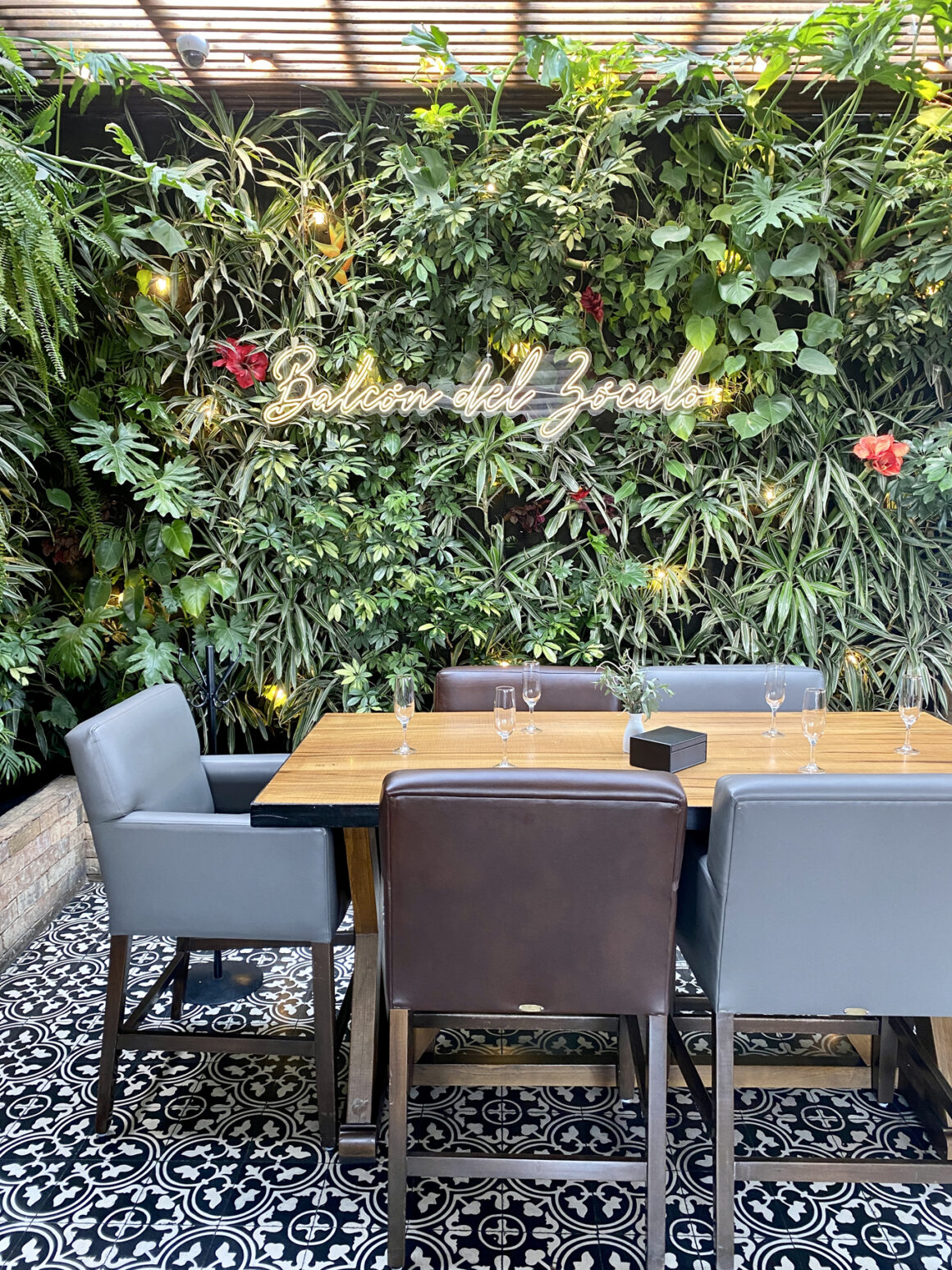
Cantina Salón Rios. With a decor of plant wallpaper, brass accents, and an impressive shelving unit to hold all of the bar’s liquor, Salón Ríos combines new touches with traditional cantina culture. In the cantina tradition, most drinks here are straight shots poured over ice and served with mixers on the side. There’s a small selection of house cocktails; plus, they serve classic Mexican dishes like tacos, enchiladas, and carnitas with an upscale twist, like the Savory Duck Carnitas in tender tacos de canasta. We came for drinks, dominos, and salsa dancing, although not necessarily in that order.
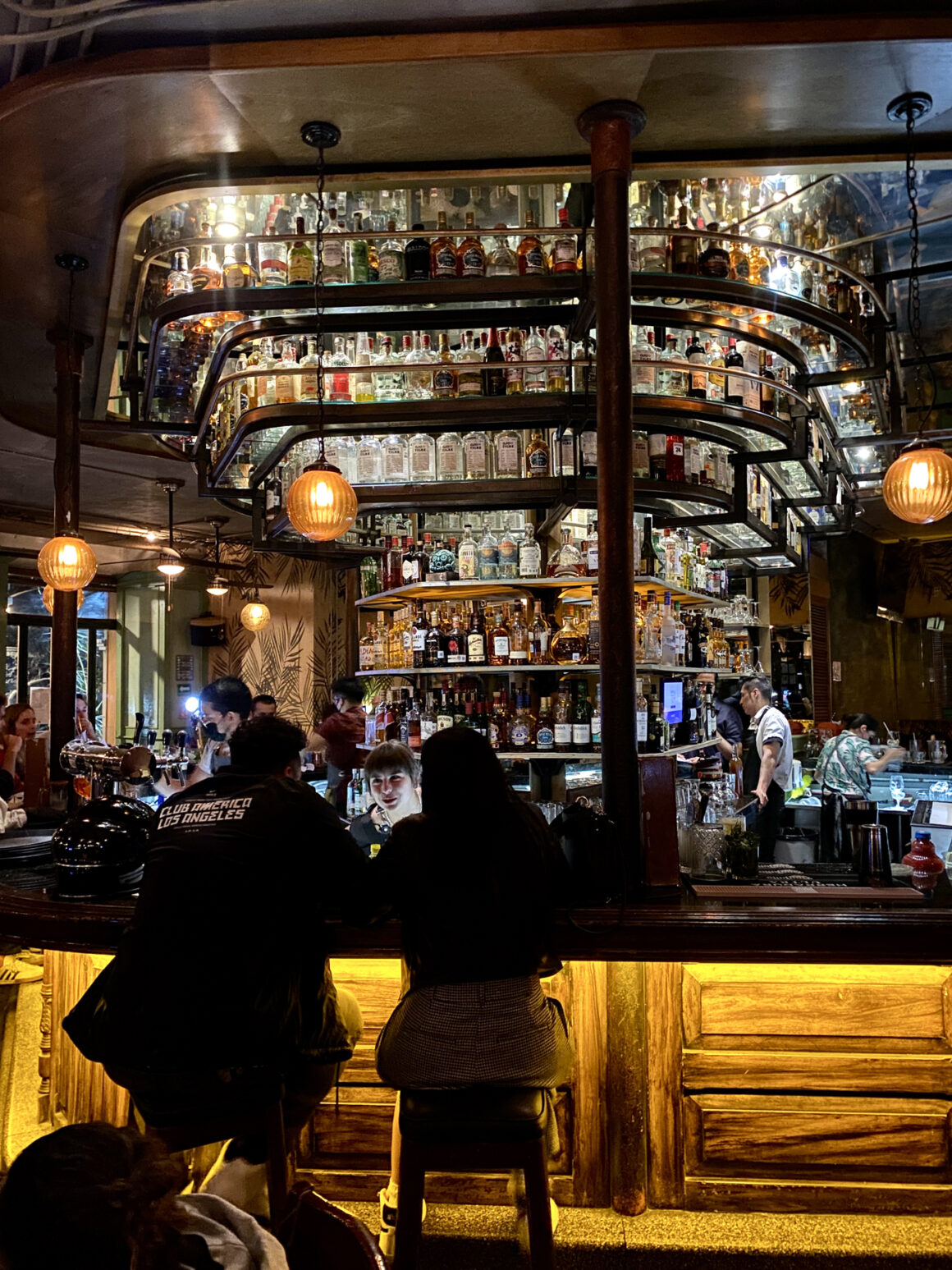
Tacos Don Guëro. We didn’t seek out Don Guëro, but rather stumbled upon it as it located catty corner from the Salón Rios. Open 24 hours a day, Don Guëro serves a tasty selection of Tacos de Pastor, Cabeza, and Bistec. A specially of the house are the “Costras”, meat wrapped in a crispy cheese, what I like to call chicharron de queso. It is amazing.
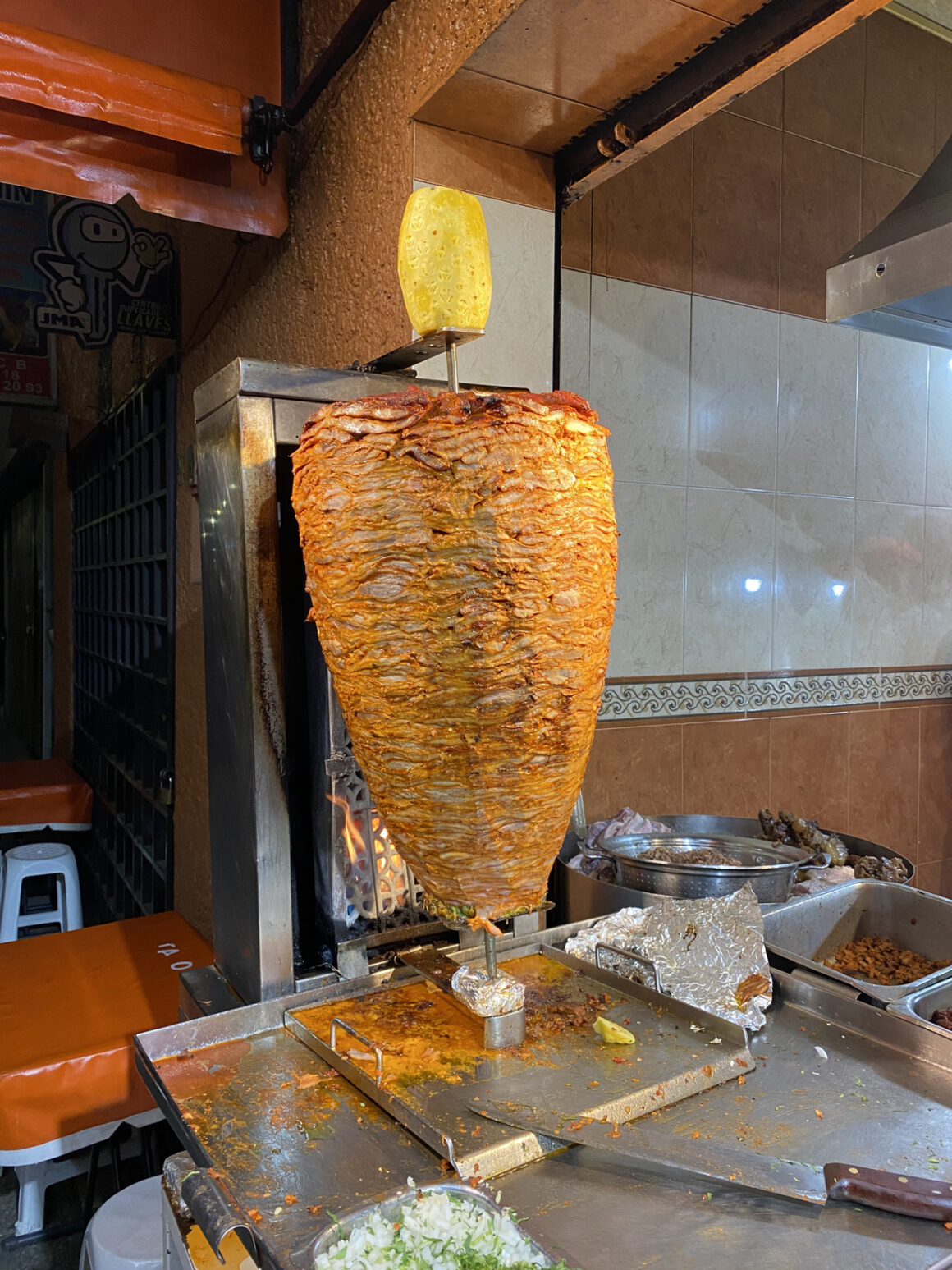
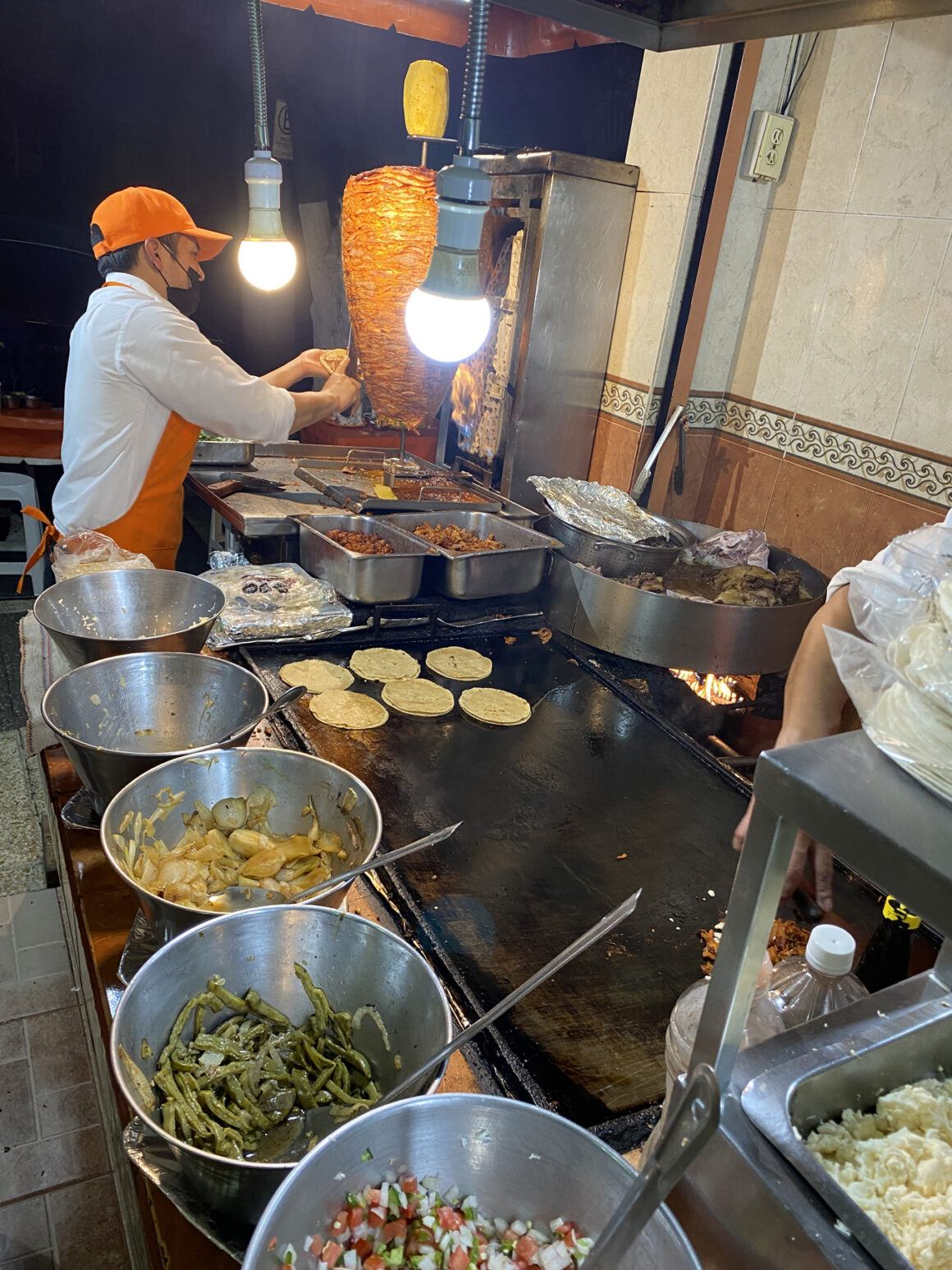
Licorería Limantour. Licorería Limantour is a bar only, but not just any bar: since 2014 it has been a Mexico City institution and voted Best Bar in North America by Rémy Martin Legend of the List for several years. As a cocktail writer, I had to go. But I have to say, it might be resting on its laurels. I don’t know…feel free to check it out for yourself. I just felt it was odd that every cocktail was sponsored by a certain liqueur company, which is something I had never seen before. If you go, try their most famous drink, the Margarita al Pastor. I will give Licorería Limantour tremendous credit for spawning a cocktail revolution in Mexico City, and I am just really excited to try some of the off shoots like Hanky Lanky, Gin Gin, and Fifty Mils.
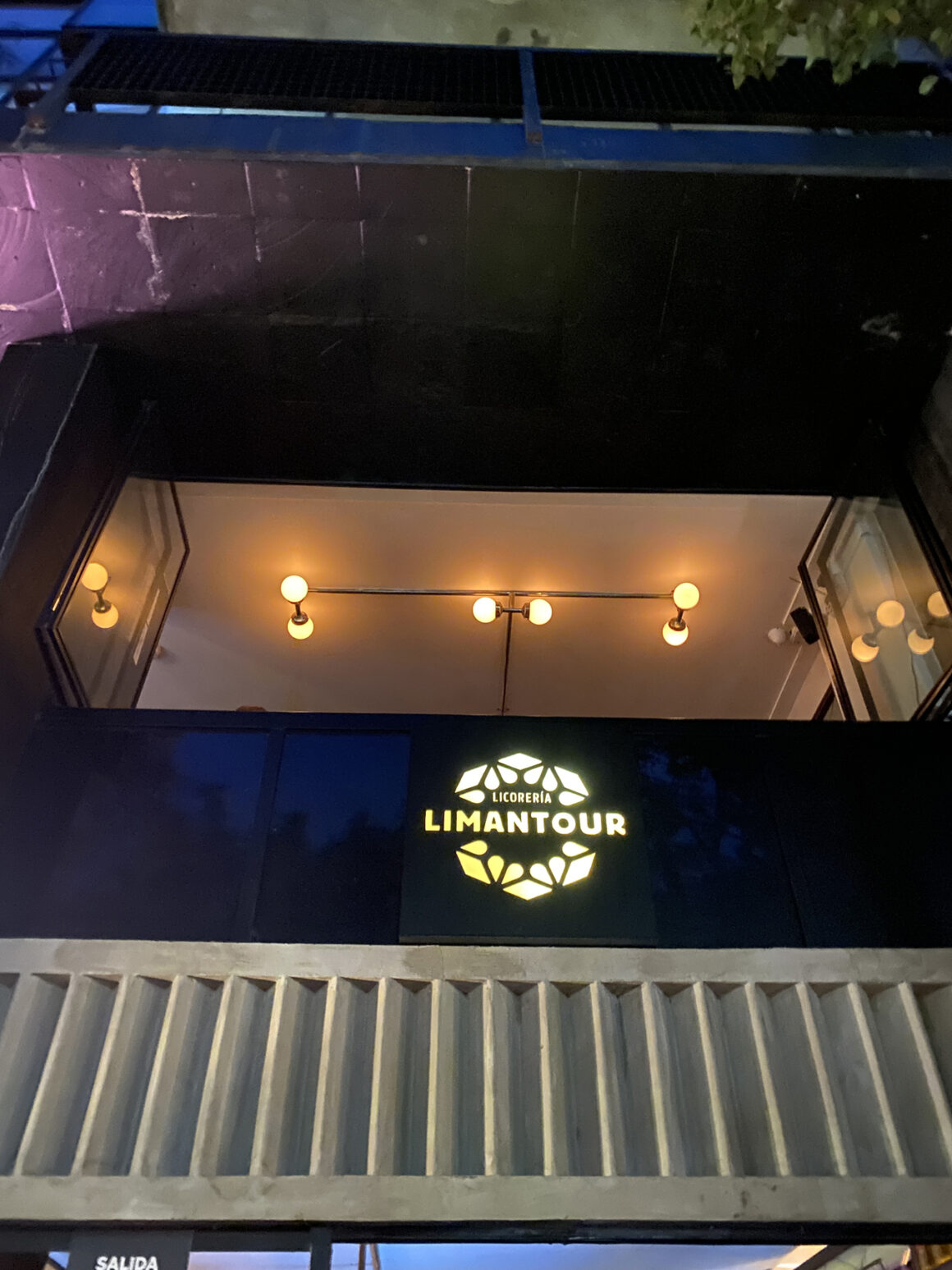
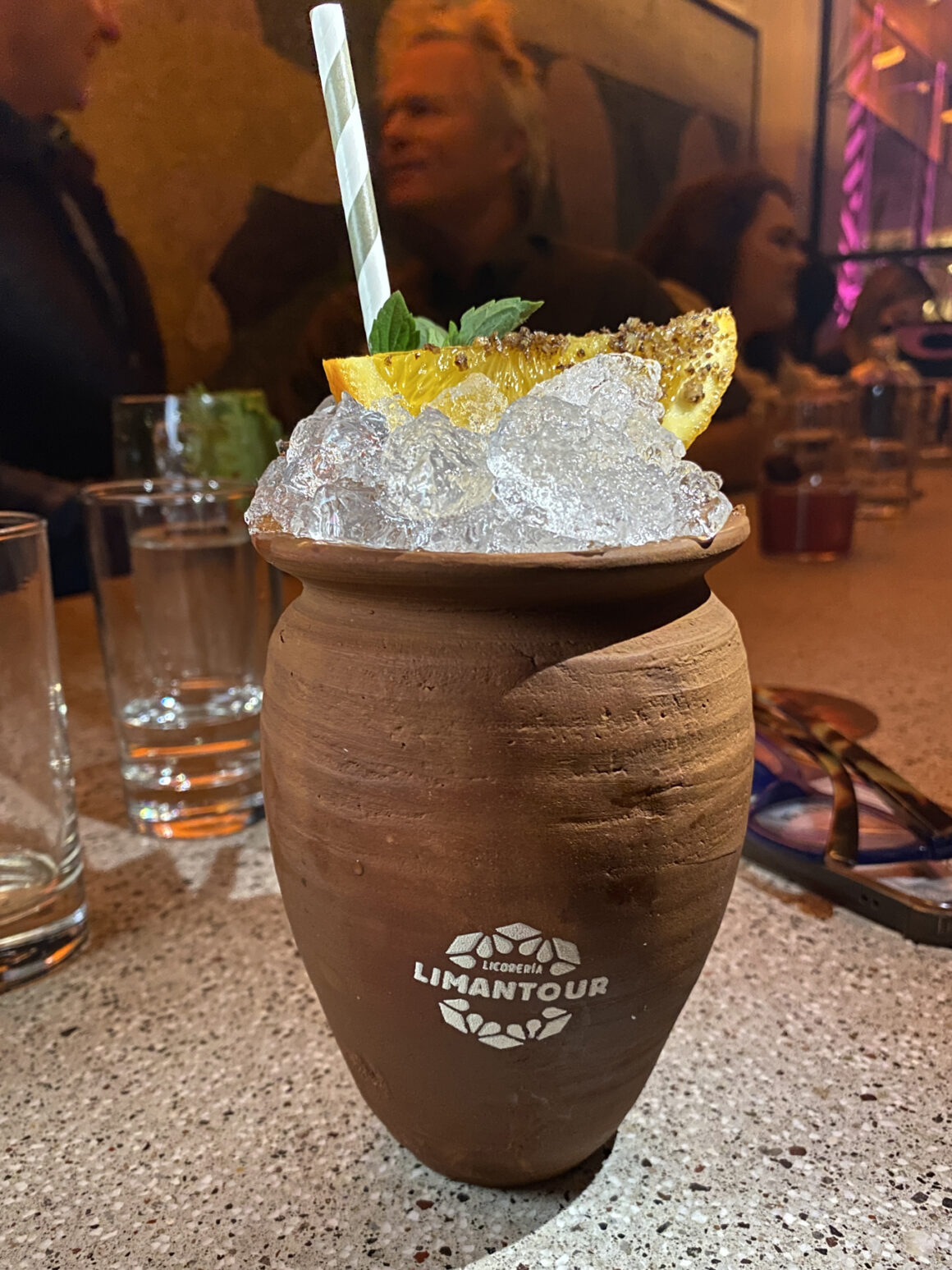
Panadería Rosetta. A small cafe/bakery across the street from the main Rosetta restaurant that serves fantastic coffee and pastries in a welcoming space. Quick, easy, and inexpensive.
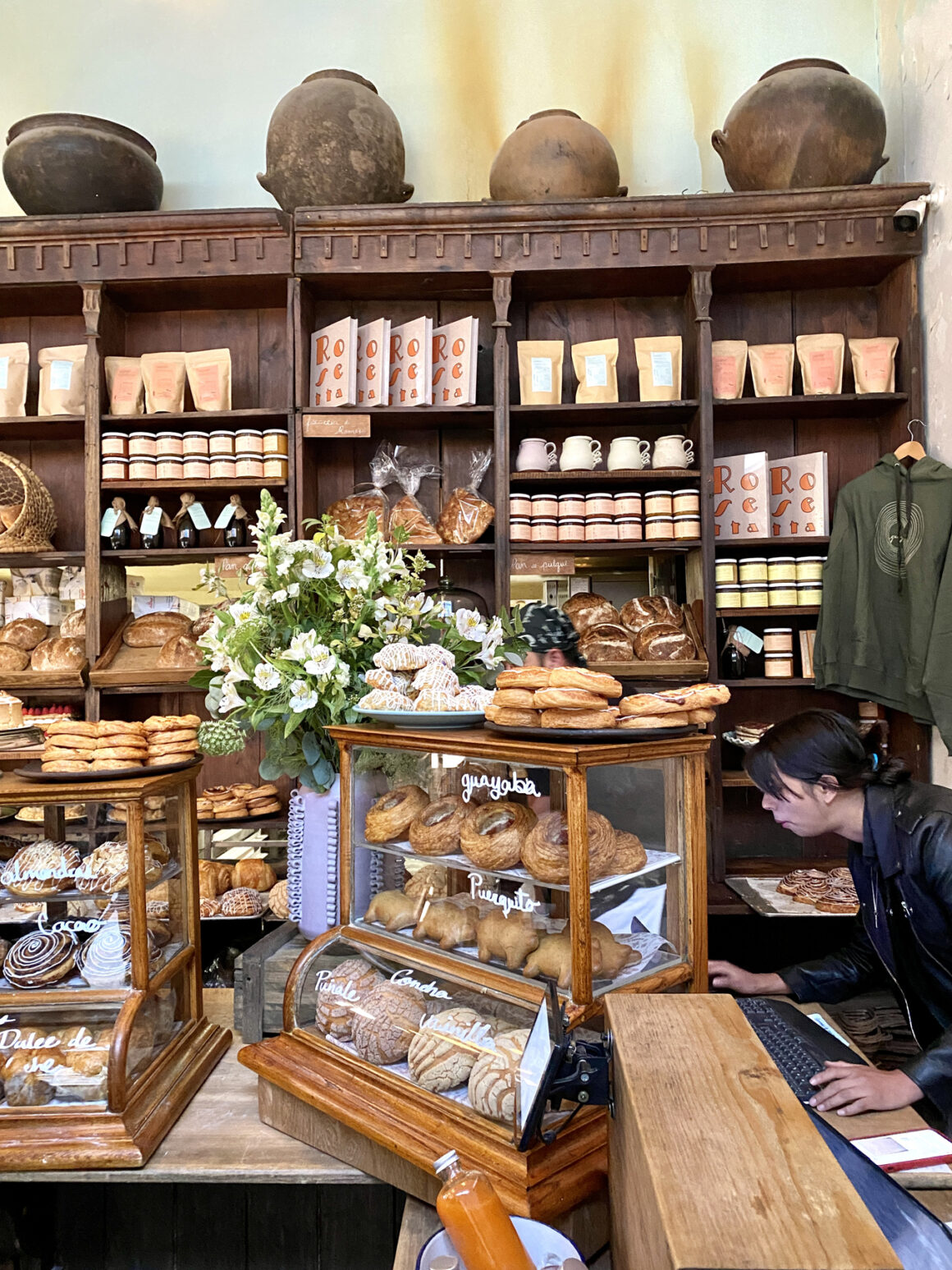
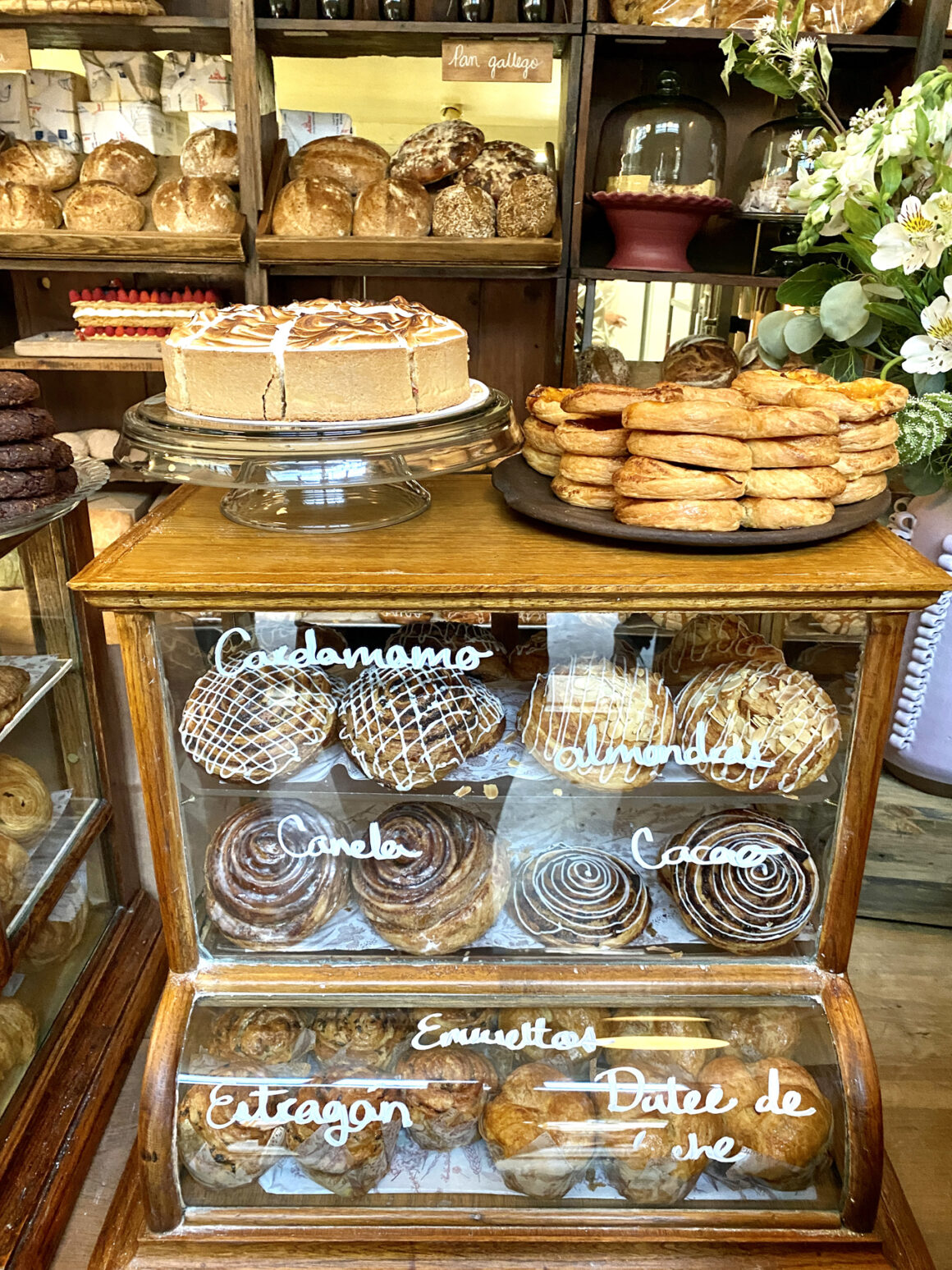
A few tips to stay healthy and safe:
- Use Uber to get around, especially after dark or when traveling solo.
- Keep all your valuable belongings tight to your body, and never (ever) let a bag out of sight. We have leaned this the hard way. Many times.
- Use your gut/intuition: if a situation doesn’t feel right, get out of it. Your safety should always be your number 1 priority.
- Mexico City lies at 7,300 feet. Keep this in mind when exercising or drinking alcohol.
- Travel Insurance is always a smart thing to get when traveling abroad. Many credit cards offer it so check your coverage before you go.
Places To Visit
Teotihuacan. Located about an hour outside of Mexico City proper, Teotihuacan is a massive complex of ruins that is the most important and largest of pre-Aztec Mexico. The Aztecs named the ancient city “City of the Gods”, but little is known about the origins and demise of the Teotihuacanos. It is believed to have been a major economic and religious center. Within the complex, there’s a grid-like city with two towering pyramids, called the Pyramid of the Moon and the Pyramid of the Sun, the latter of which is said to be the third largest pyramid in the world. Definitely take a sun hat and some water, and hire a guide. We walked throughout the complex, which is about a mile long.
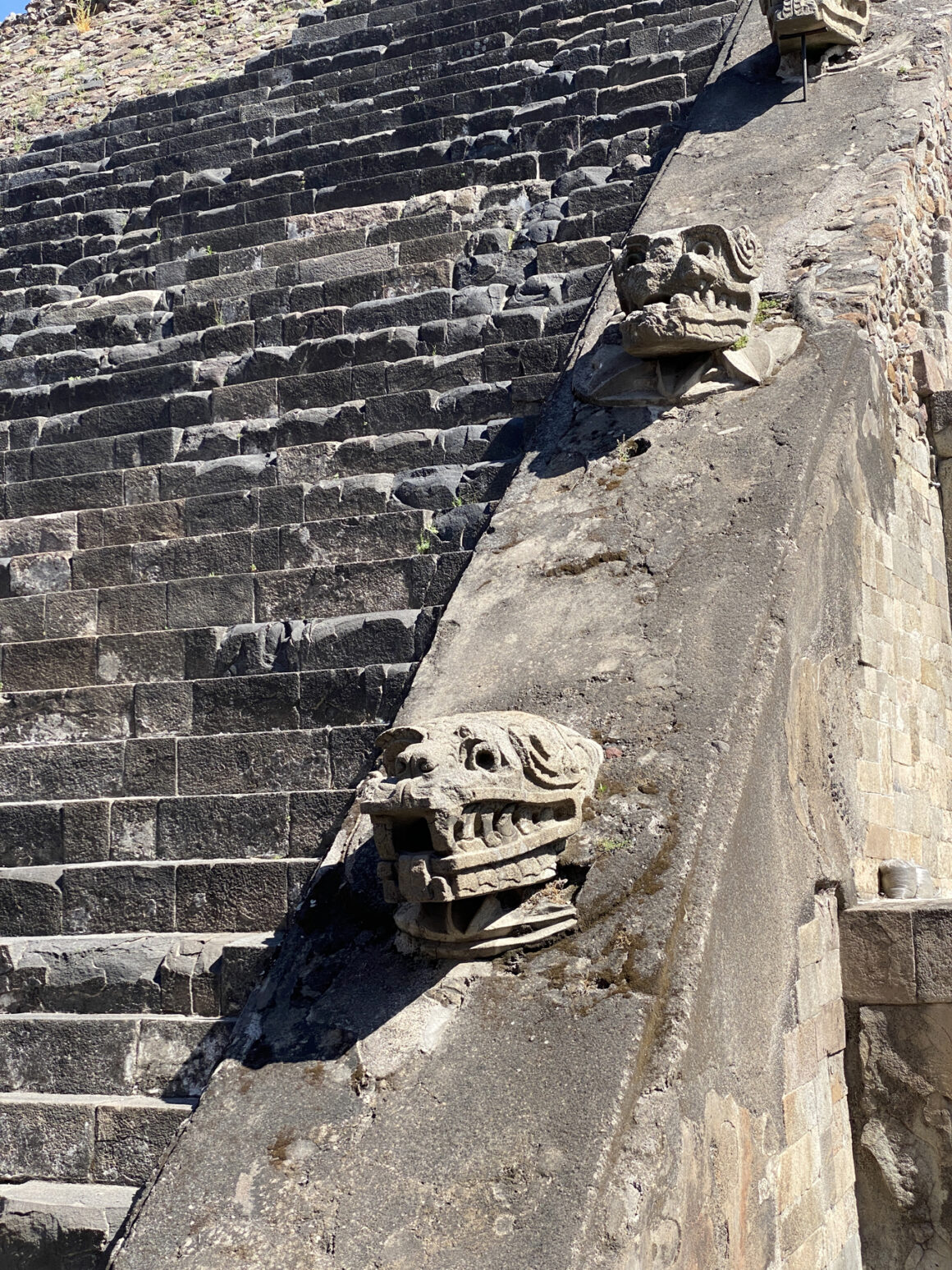
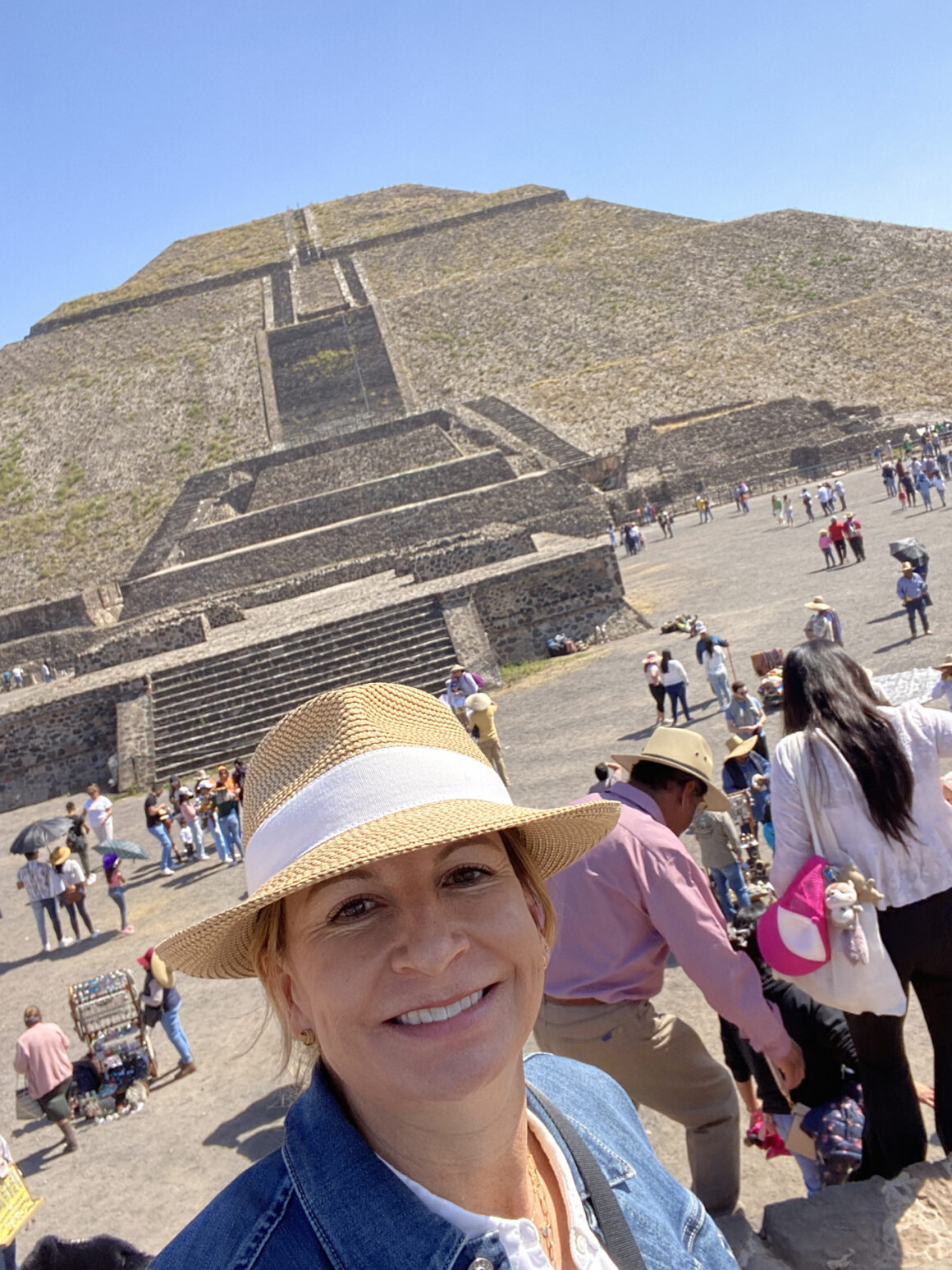
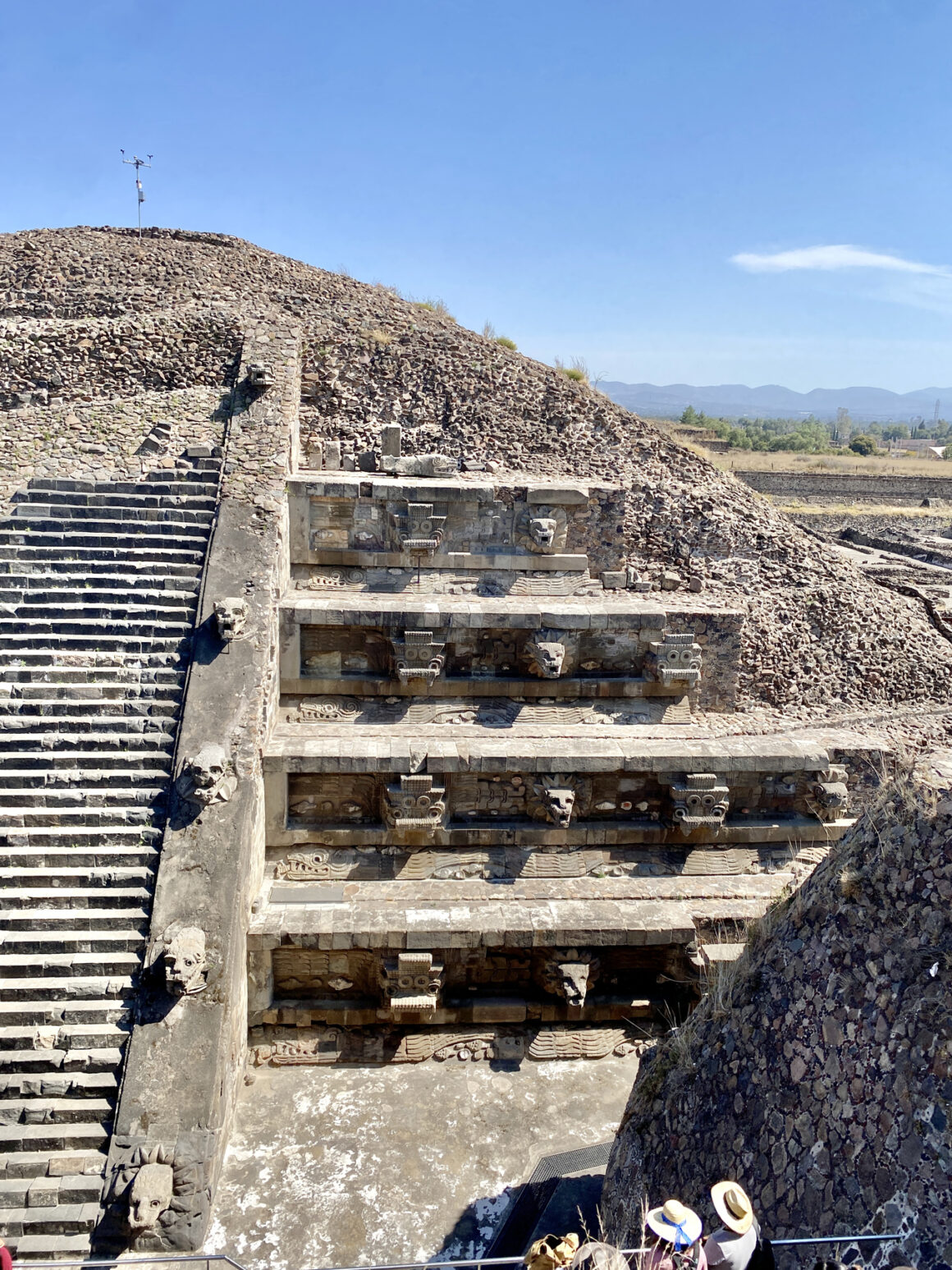
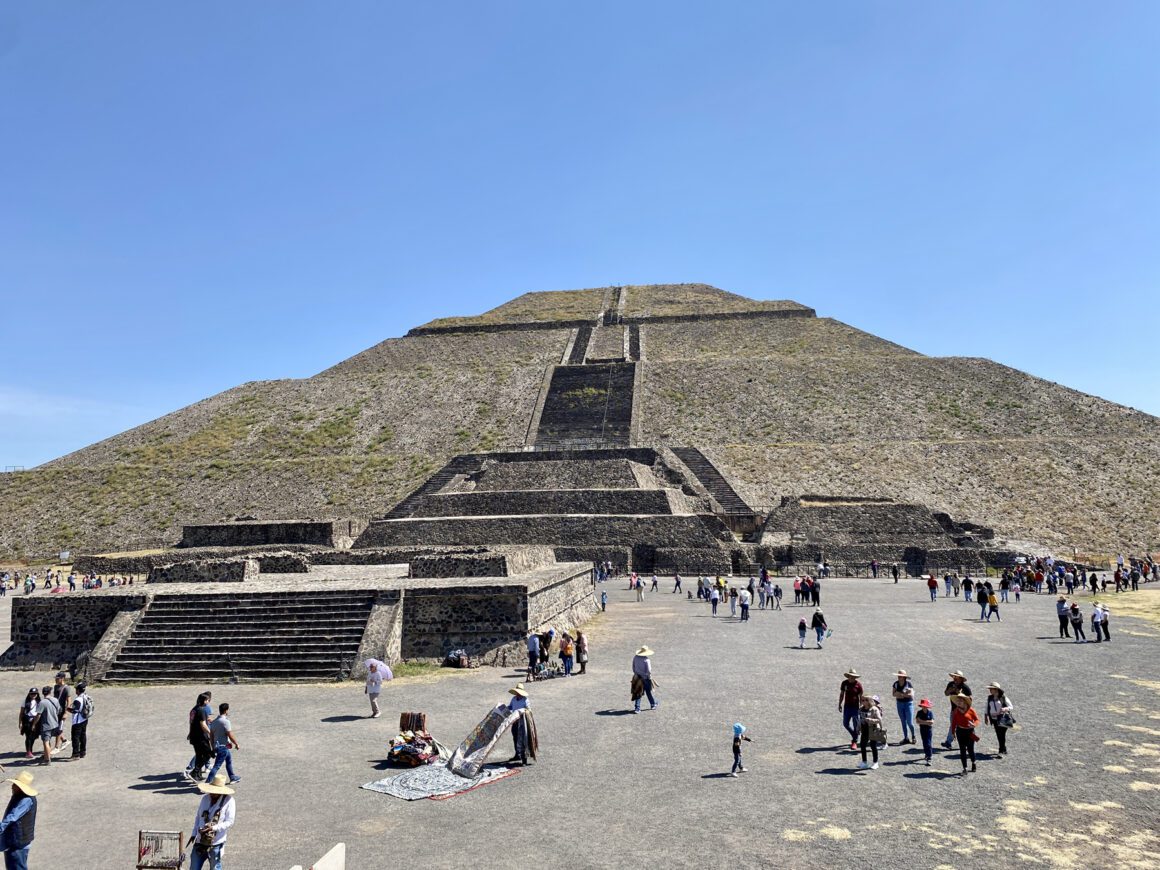
Either before or after your tour, eat at nearby La Gruta, a restaurant that has been open for over a century that is set in a large limestone cavern, with bright furnishings, colorful cocktails , and delicious regional specialties.
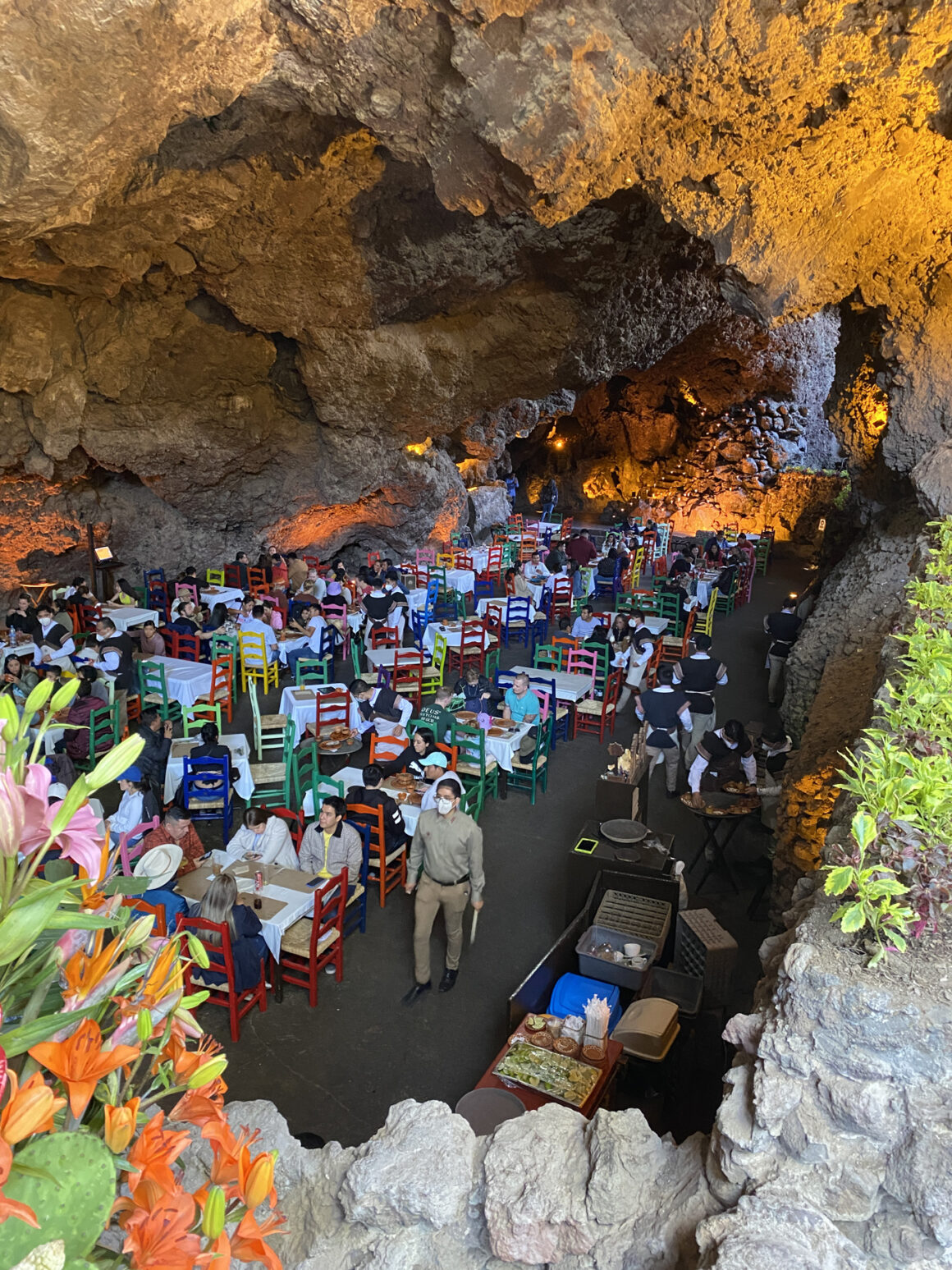
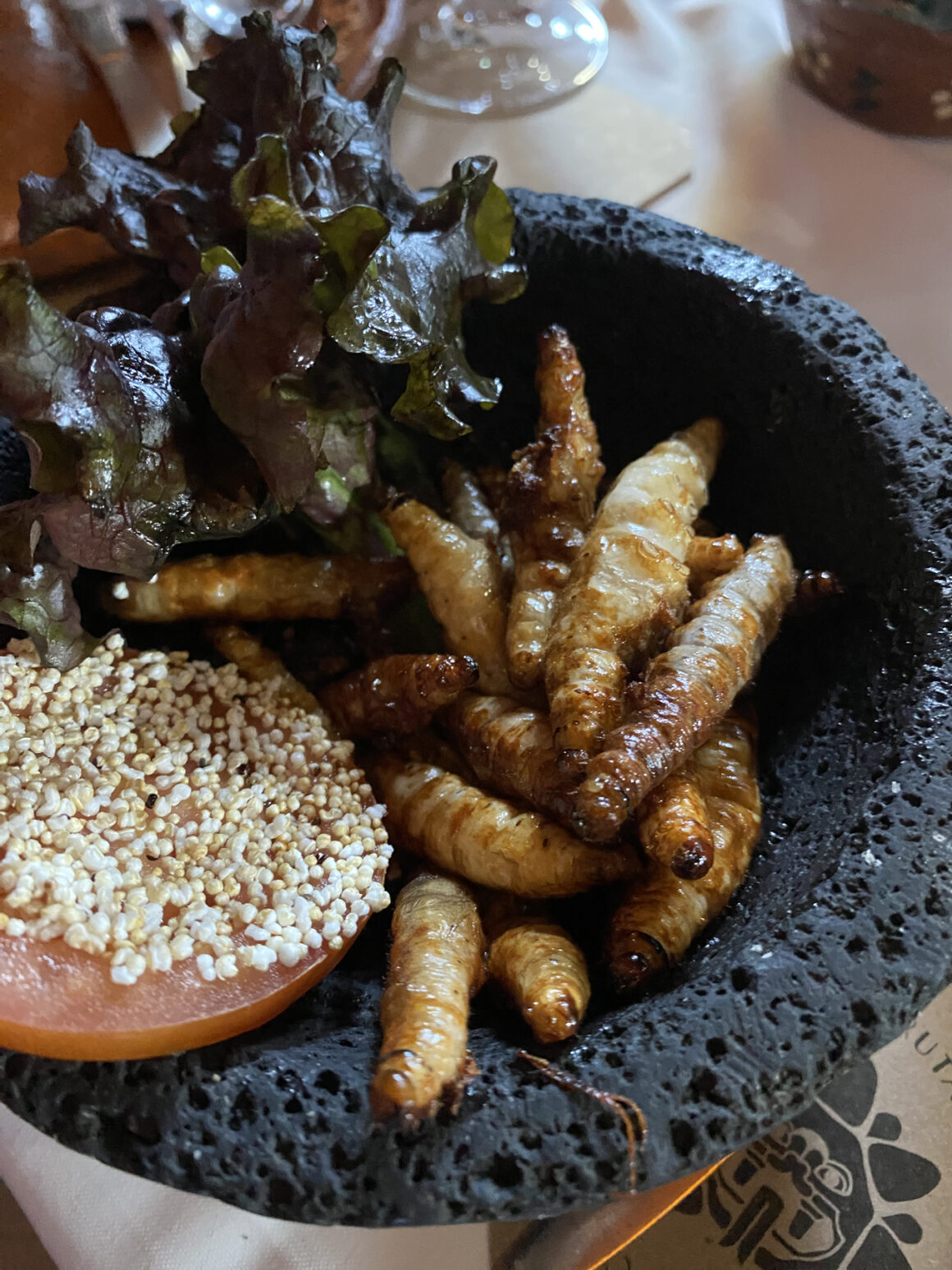
Chapultepec Castle. Located inside a sprawling park in the middle of CDMX, Chapultepec Castle is one of the most iconic sights in all of Mexico City and a necessary stop on your Mexico City itinerary. A beautiful and elegant historic castle located atop a hill, Chapultepec Castle is actually the only castle in all of North America that actually had a “crowned” ruler as an inhabitant, which would have been Maximilian I, archduke of Austria and Emperor of Mexico. From 1884 to 1934 Chapultepec was the official residence of Mexico’s presidents, until it was declared a museum in 1939.
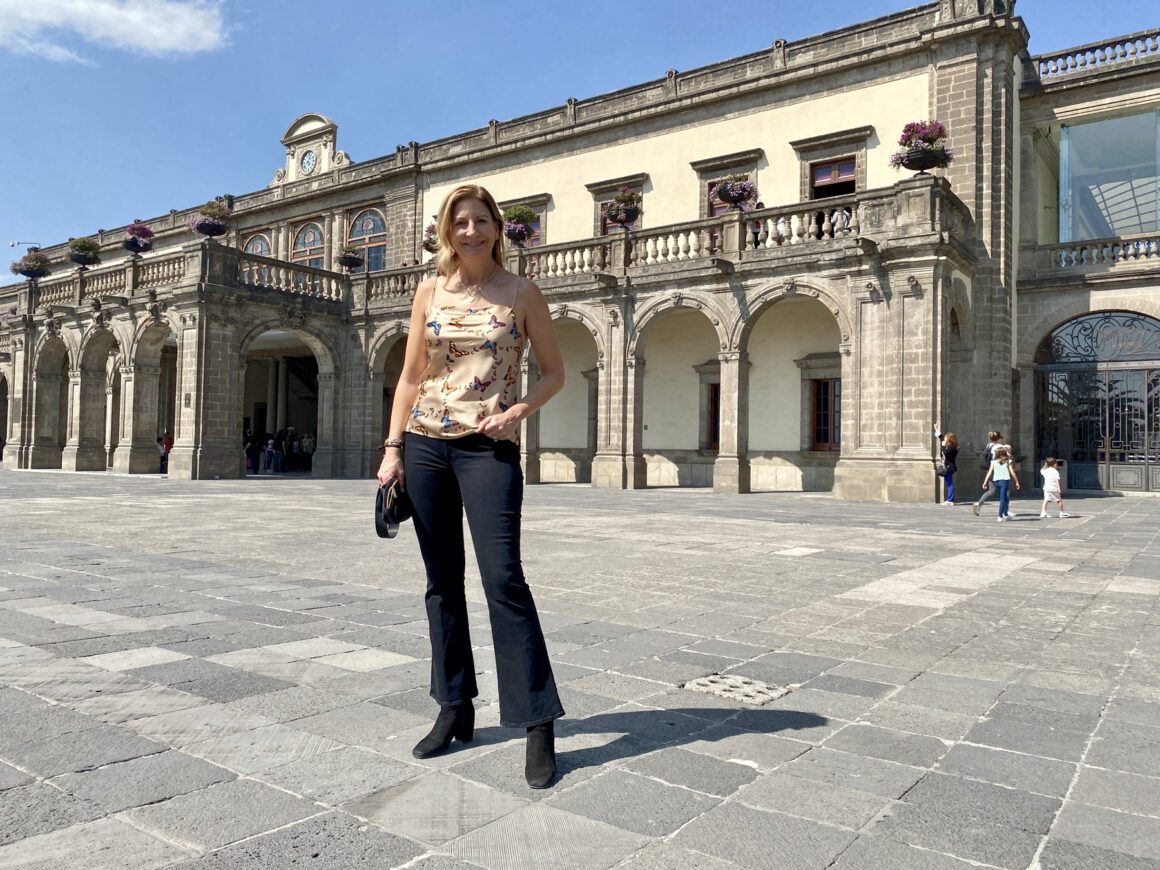
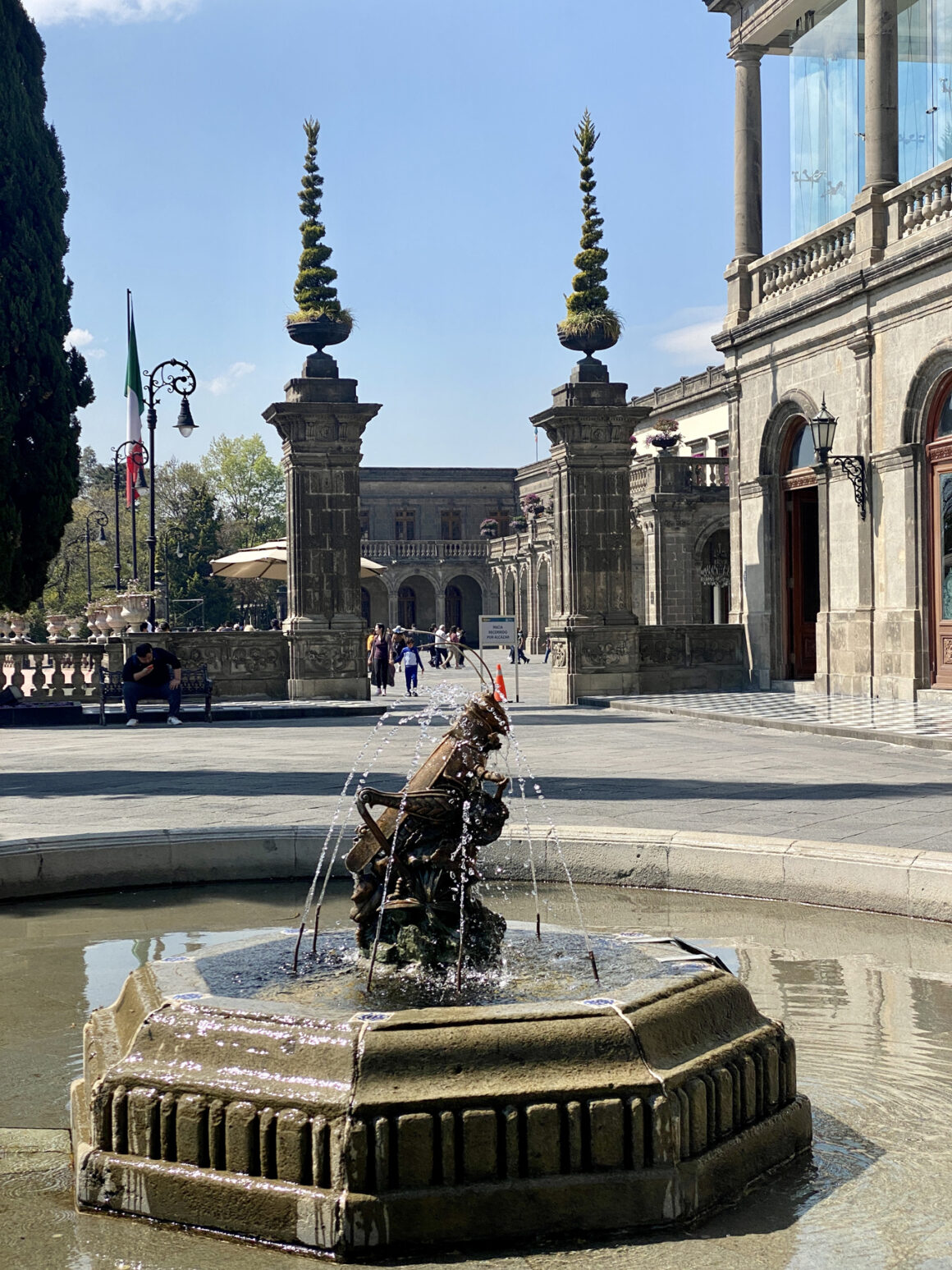
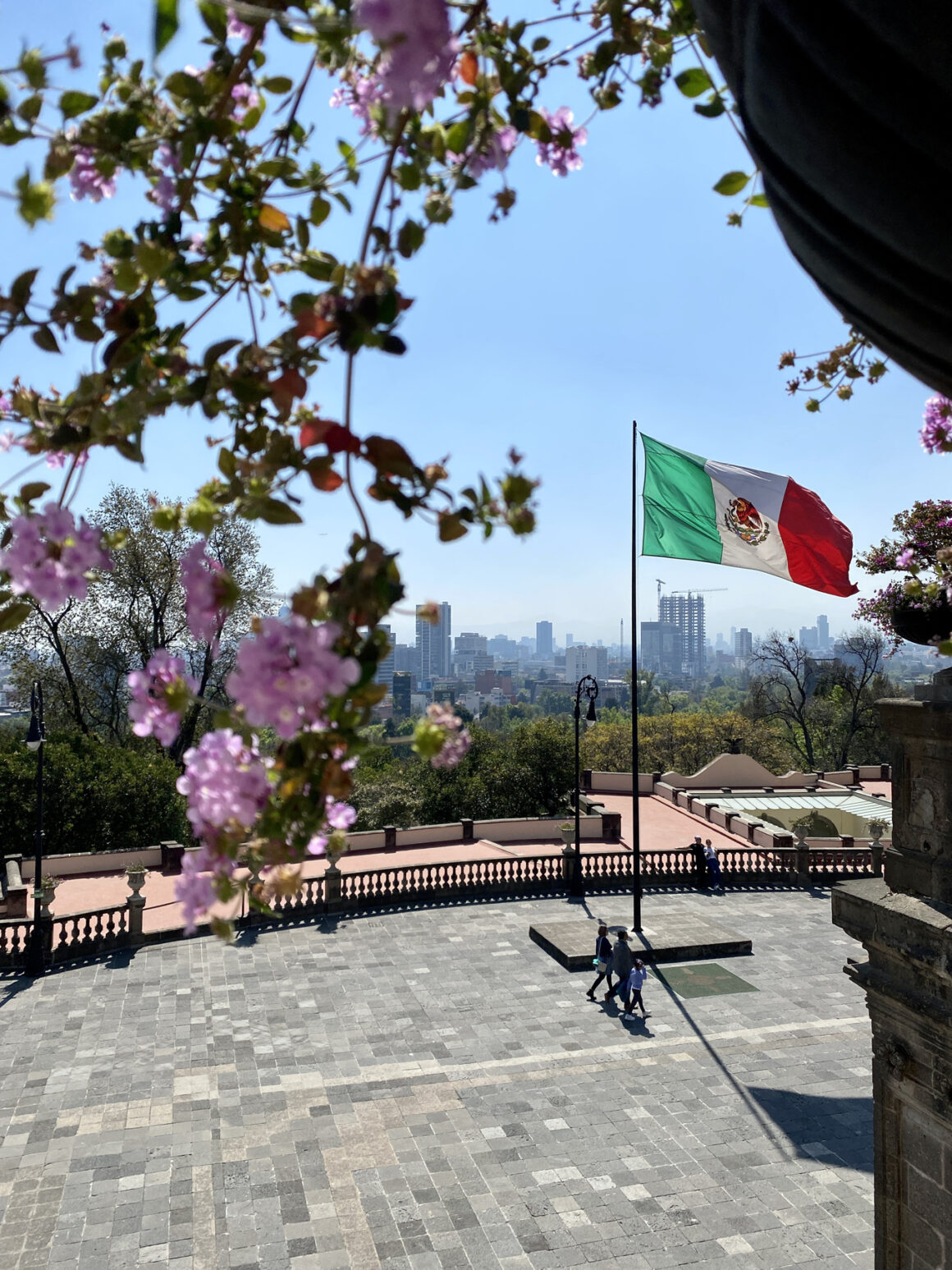
The museum offers amazing views of Mexico City while providing visitors a glimpse into Mexico’s more modern history, such as the living quarters Maximilian and the Empress Charlotta, plus some incredible murals honoring Mexico’s revolution and the revered Niños Héroes by David Alfaro Siqueiros, Juan O’Gorman, and José Clemente Orozco.
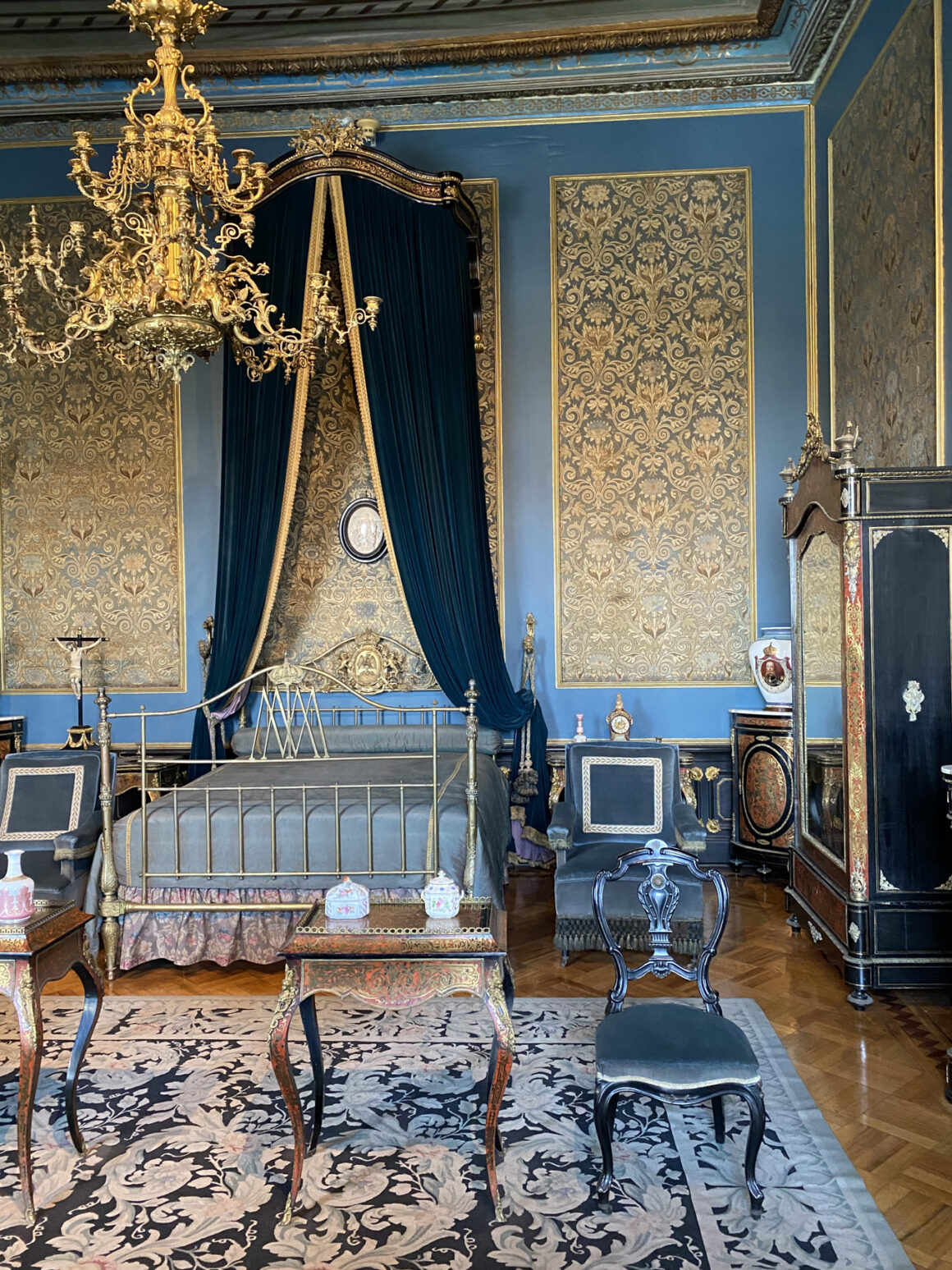
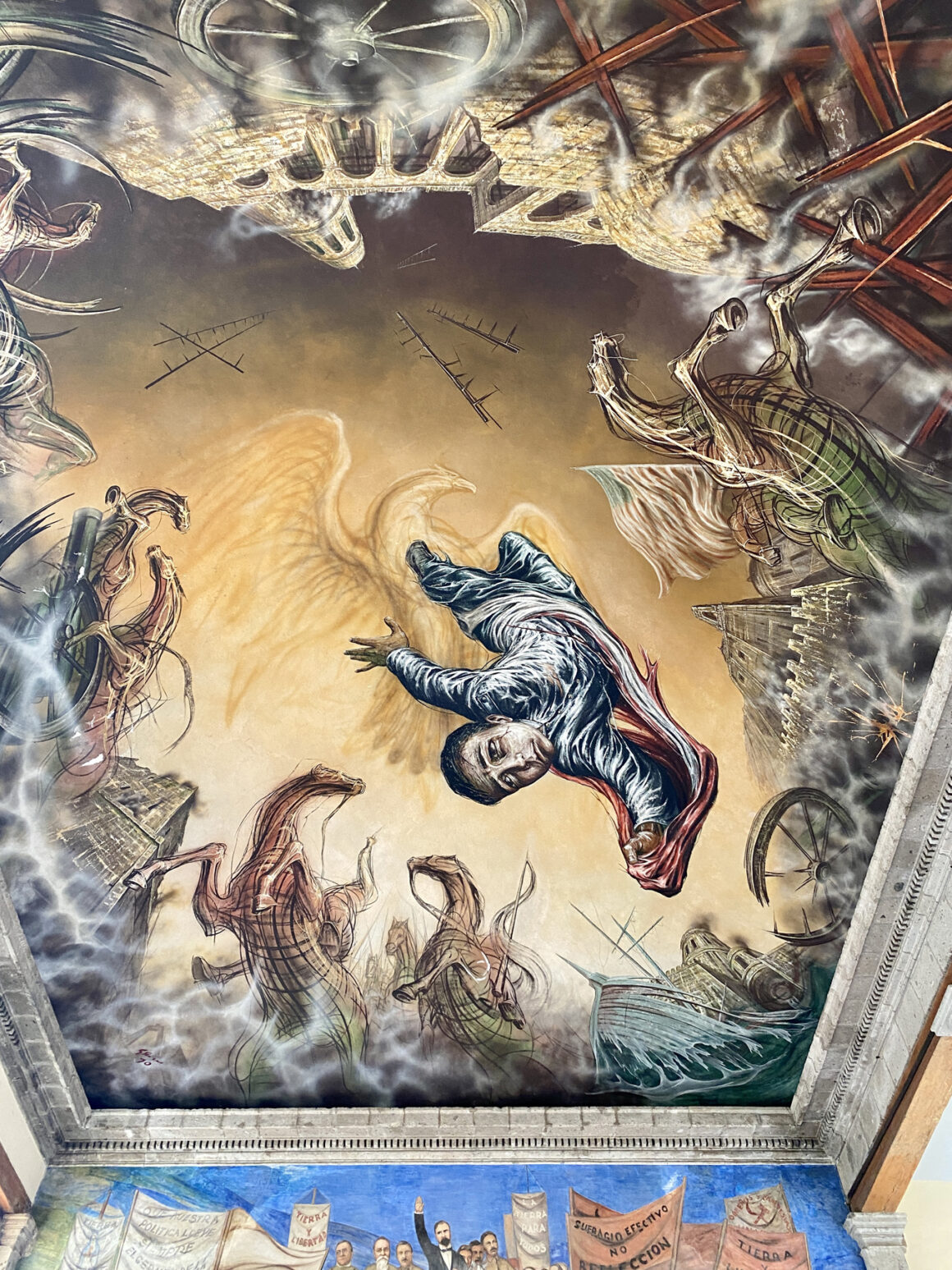
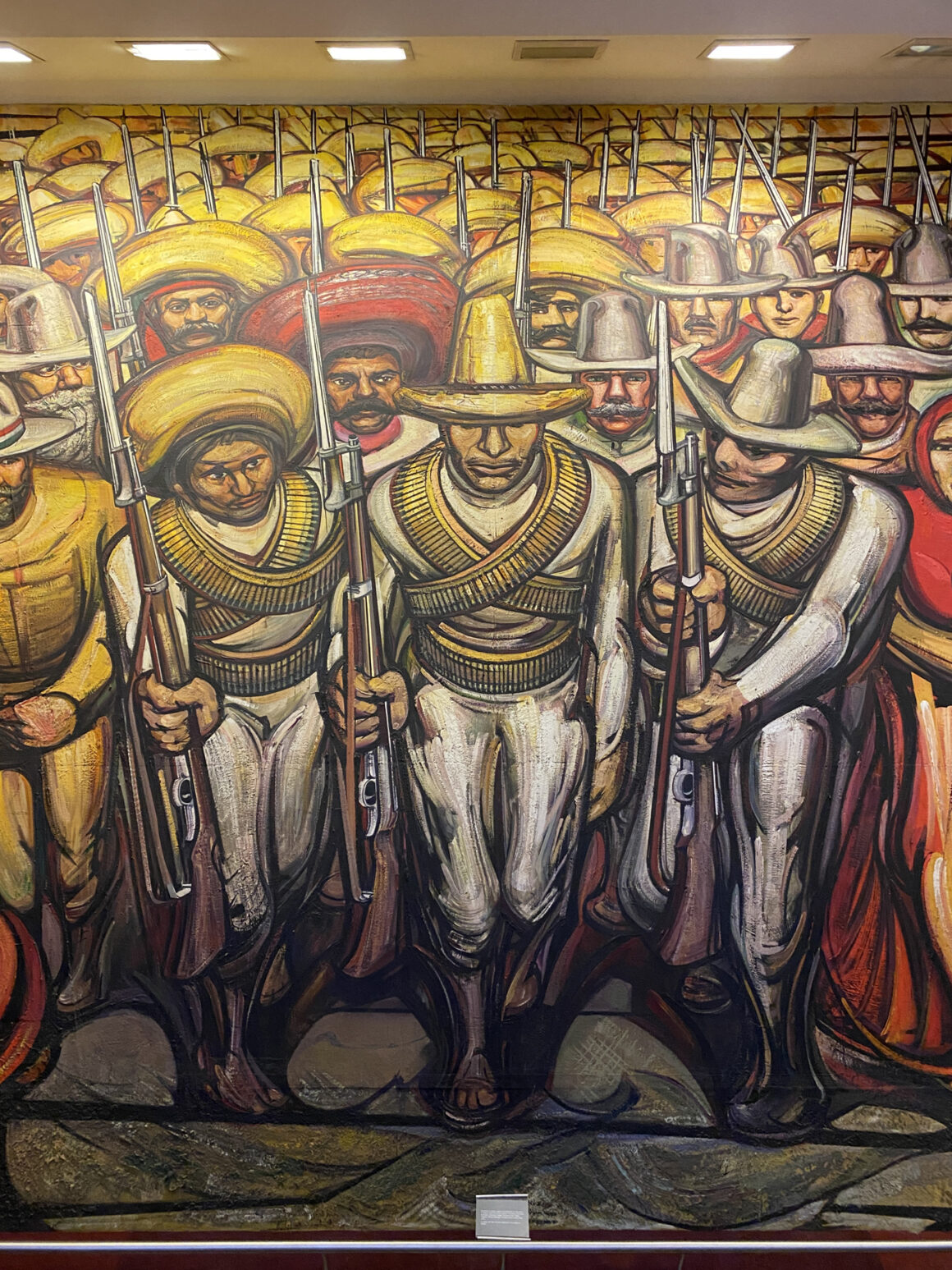
Anthropology Museum. Because no Mexico travel blog would be complete without a visit to the largest museum in Mexico, the Anthropology Museum is breathtaking with its extensive collection of artifacts from the pre-Columbian time period. Don’t miss the Aztec Sunstone, Moctezuma II Ceremonial Headdress, the Model of Tenochtitlan (my fave), the Olmec Colossal Head, and the Jade Mask of Zapotec Bat God.
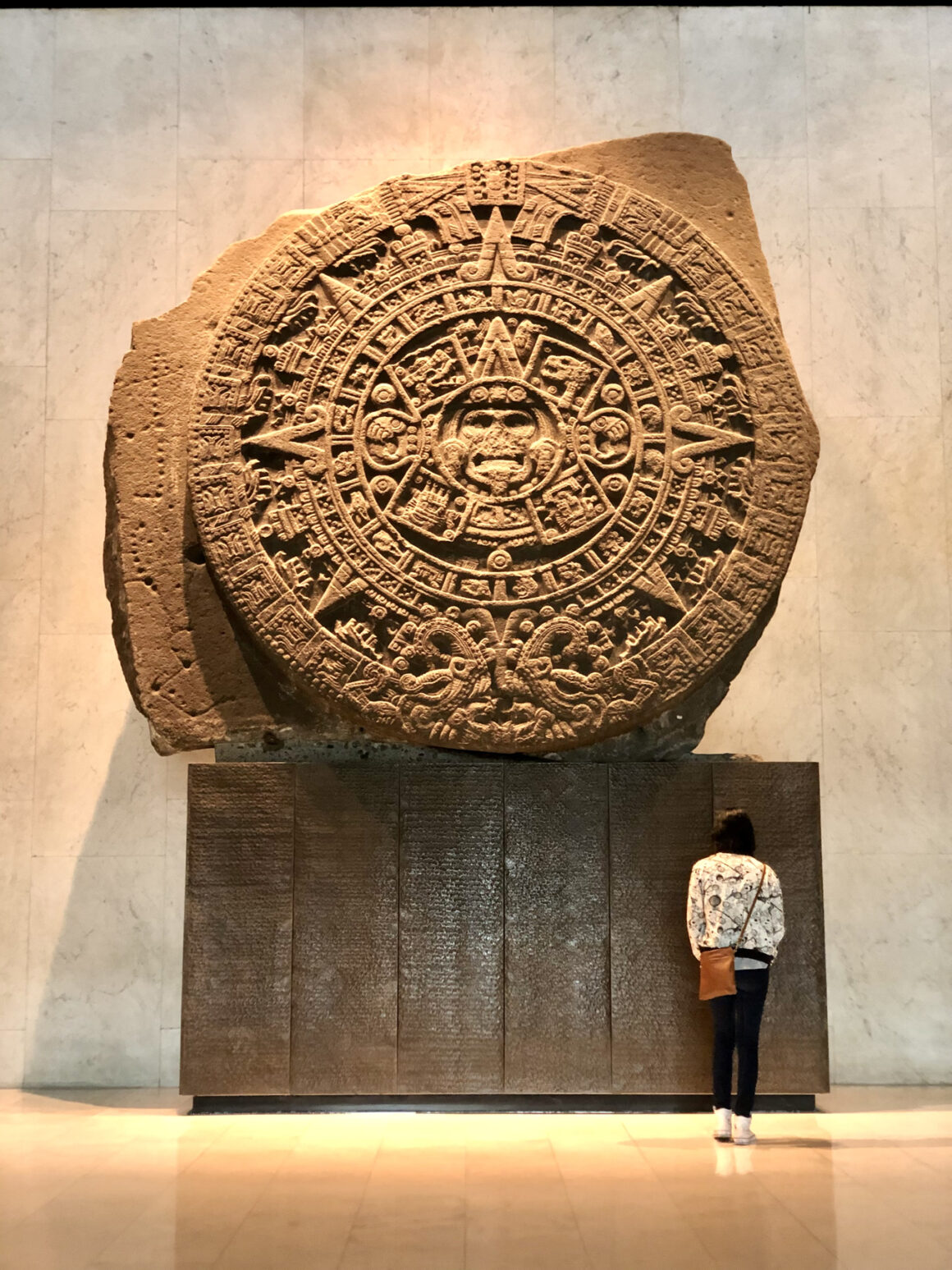

Museo Frida Kahlo. Also known as La Casa Azul for its cobalt-blue walls, Museo Frida Kahlo is Kahlo’s birthplace, the home where she grew up, lived with her husband Diego Rivera, and where she later died. In 1957, Rivera donated the home and its contents in order to turn it into a museum in Frida’s honor, and it is filled with their artwork and belongings. The museum is located in the Colonia Carmen area of the very charming section of CDMX called Coyoacán.
Coyoacán. Coyoacán is one of the oldest and most historic of all Mexico City neighborhoods, with cobblestone streets, colorful buildings, great food, and gorgeous parks. Other than the Museo Frida Kahlo, check out the Coyoacán Market (rumored to have the best tostadas in town), the zócalo, and the Iglesia de San Juan Bautista. The San Angel Inn is also said to have a wonderful restaurant. I feel you could probably do Coyoacán in the morning, and Xochomilco in the afternoon.
Xochimilco. Xochimilco—in Nahuatl language meaning “where the flowers grow”—is very interesting because it is the last remnant of the vast system of canals, man-made islands, and floating gardens of the vast lake system that once covered the valley of present day Mexico City. It is a Sunday tradition to rent one of the colorful boats and cruise around listening to mariachi bands while sipping mezcal cocktails and pulque. All of the boats are BYOB and you can bring as much food/beverages as you want, but there are vendors that float by selling souvenirs (flower crowns), drinks (alcoholic and not), and food (tacos, corn, etc). The only issue is that of the not-so-nice public restrooms, at least that was the case in 2001.
Museo Soumaya. Museo Soumaya is a private museum comprised of two buildings, Plaza Carso and Plaza Loreto, founded by Mexican billionaire Carlos Slim. The collection consists of over 66,000 pieces of art, the majority of which consists of European works from the 15th to the 20th centuries (think August Rodin’s largest collection of cast sculptures outside of France), plus Mexican art, religious relics, historical documents, and the world’s largest collection of pre-Hispanic and colonial era coins. Slim name the museum for his wife, Soumaya Domit, who passed away in 1999.
Museo Jumex. Museo Jumex is a contemporary art museum located in the quiet residential neighborhood of Polanco. Funded by one of the largest juice companies in Mexico, Grupo Jumex, the Museo Jumex building was designed by British architect David Chipperfield. Inside this 15,000-square-foot white-concrete cube with a sawtooth top you will find artwork by the likes of Andy Warhol, Martin Kippenberger, Cy Twombly, and Damien Hirst.
Casa Luis Barragán. The former residence of architect Luis Barragán in the Miguel Hidalgo district is a museum exhibiting Barragán’s work, complete with original personal furniture and objects. It has been declared a UNESCO World Heritage Site for as one of the most influential and representative examples of Mexican architecture.
Basilica of Our Lady of Guadalupe. As one of the most important pilgrimage sites for Catholics, the Basilica of Our Lady of Guadalupe houses the famous cloak containing the image of Our Lady of Guadalupe. The church stands on the spot where two apparitions of the Virgin are said to have appeared to an Indian convert named Juan Diego and commanded that the church be built. It is a very cool site to see, especially if you or a loved one was born on December 12, celebrated as the holy day of the Virgin of Guadalupe.
Casa De Los Azulejos. Casa de los Azulejos is a beautiful 16-century building covered on three sides by blue and white Talavera tiles. Built by the wealthy counts of the Valle de Orizaba, the Casa de los Azulejos now houses the flagship restaurant of the Sanborn’s chain. Go in, grab a drink and one of their hamburgers, which I seem to recall where pretty tasty.
Centro Histórico of downtown CDMX. Anchoring the plaza is the the Metropolitan Cathedral that was built in the mid-16th century and is the largest cathedral in Latin America. Catty corner is the National Palace, a historic building was once occupied by Hernán Cortés, and includes a famous panoramic mural of Mexican history by Diego Rivera. I have read that this is also where the current president of Mexico resides. There is also the ruins of the Templo Mayor, which was the main temple of the Mexica people in their capital city of Tenochtitlan, which is now Mexico City. After the destruction of Tenochtitlan, the Templo Mayor, like most of the rest of the city, was disassembled to be used as construction materials to create the Spanish colonial city. The Temple’s exact location was forgotten, until the site was excavated by archeologists in 1978.
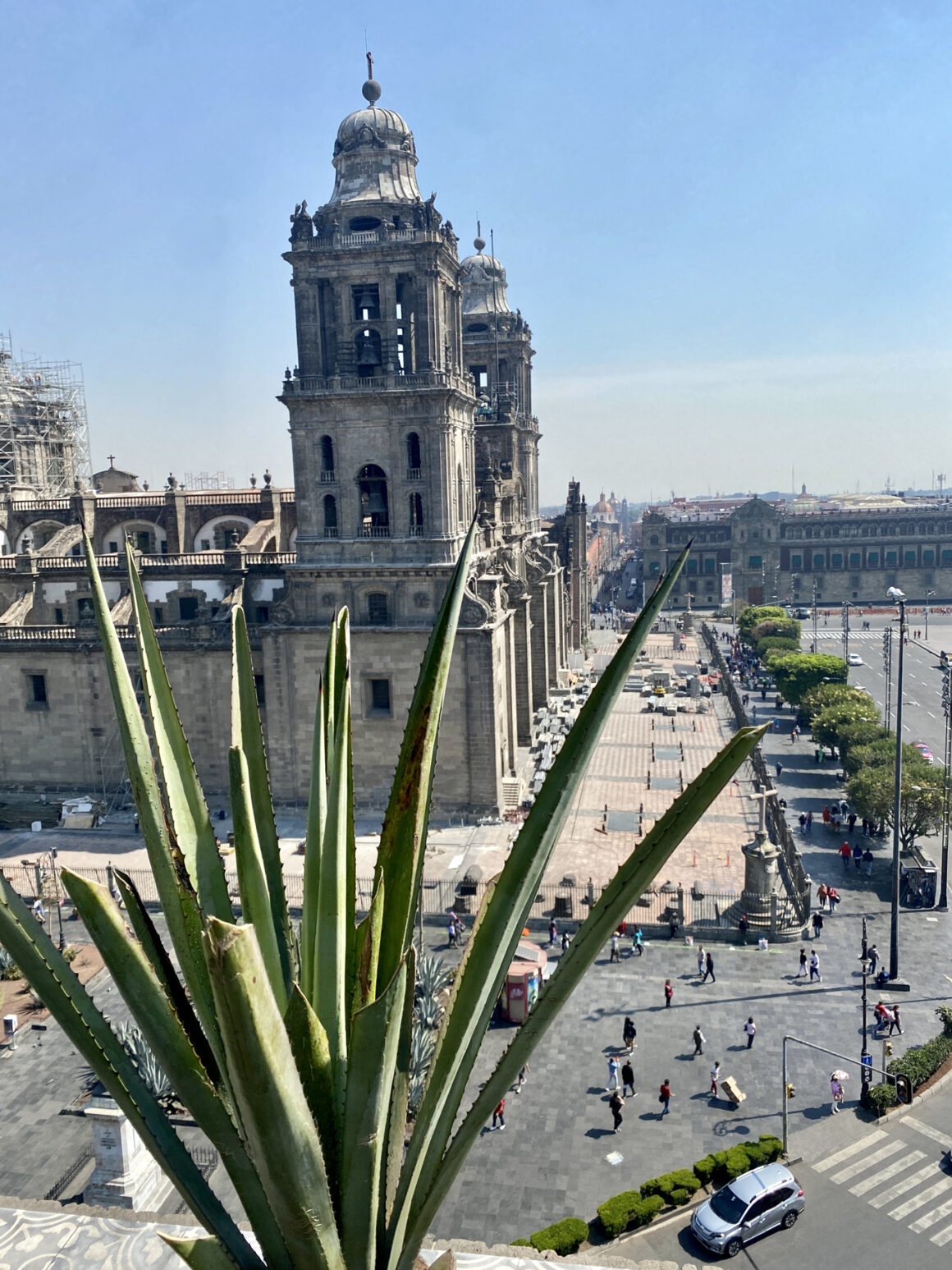
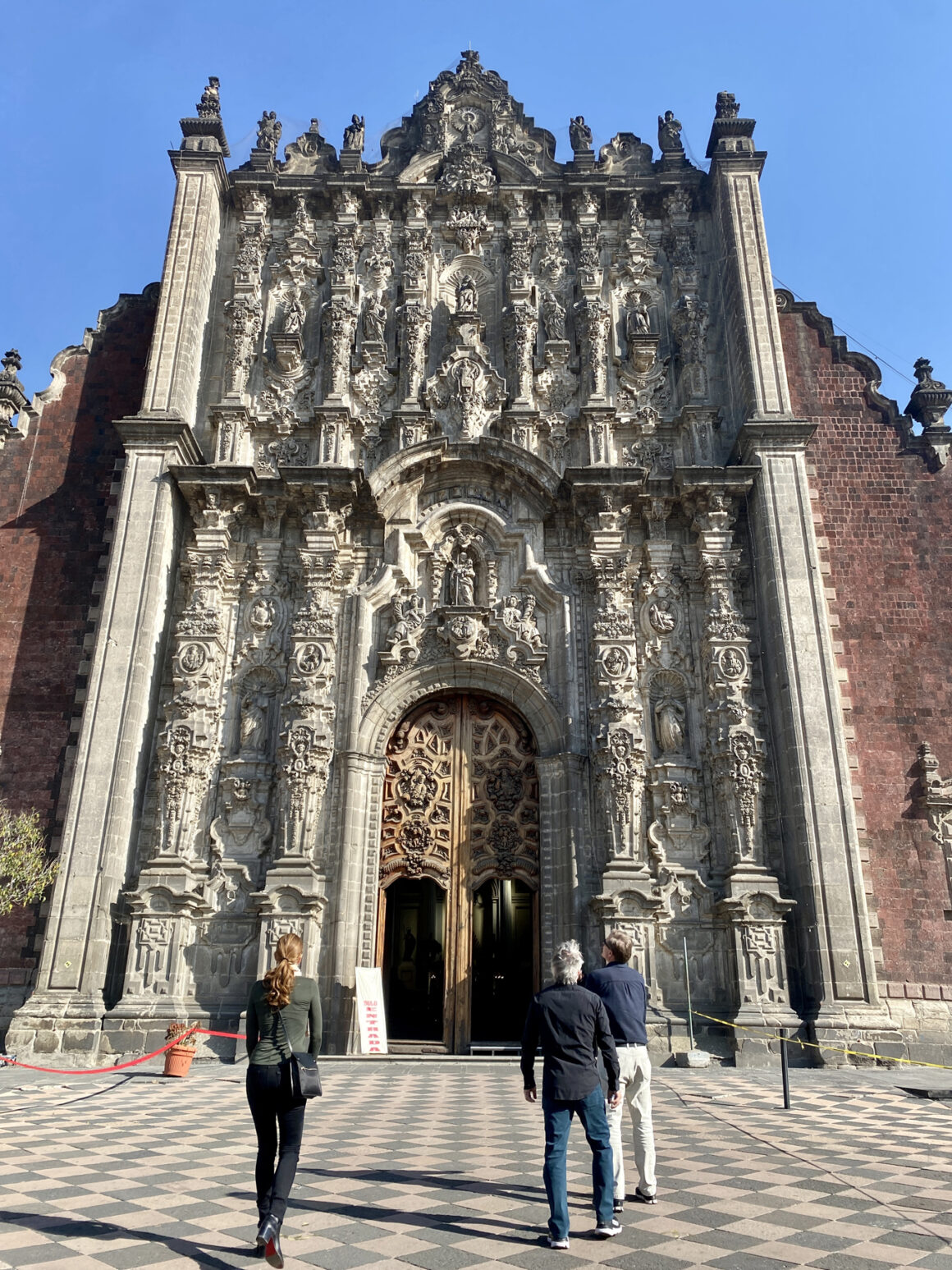
Where to Sleep? This last trip we stayed in Roma at the Brick Hotel, which is a stone’s throw from Rosetta, El Tigre Silencioso, El Auténtico Pato Manila, and Salón Rios. So, apart from it being in a wonderful location, the Brick Hotel is part of the Small Luxury Hotels of the World chain, boasting 10 rooms and seven suites, all comfortable and modern. Interesting back story of the building: the original mansion was built in the early 20th century from bricks shipped over from England as a residence for the head of the Bank of London & Mexico, and later owned by one of Mexico’s presidents. I would 100% stay there again. Other choices are the St. Regis, Four Season, Ritz, Sofitel, and Las Alcobas. There is really no shortage of wonderful hotels…it just depends if you prefer a certain area of town.
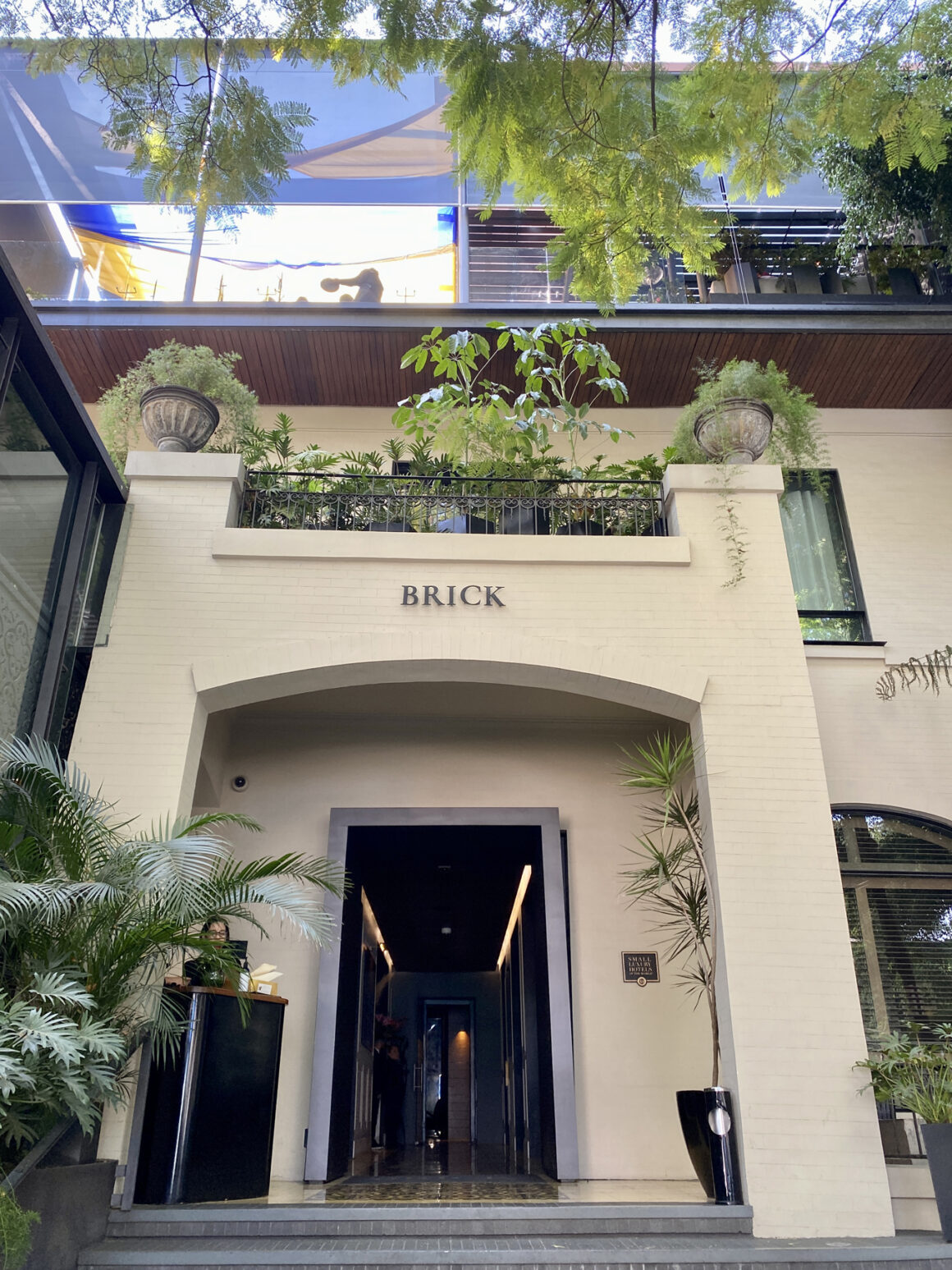
WHAT’S NEXT? What is on my Mexico City “come back” list? Well, I have been told that we need to do a cantina tour, which I am not sure what that entails, but sounds like a ball. Also high on my list is a place that David Chang spoke about, Caldos de Gallina y Enchiladas, which not surprisingly serves enchiladas and apparently the best chicken soup in the world. Plus, there is Contramar restaurant, and the bar-side “Taco Omakase” menu at Pujol, which comes with beverage pairings. Plus, I think we are going to have to hit El Tigre Silencioso again for those tasty cocktails.
Two things I have heard a lot about but not sure I have to try:
The not-so-secret place to get amazing views of the Palacio de Bellas Artes is the Cafe Don Portiri in the Sears across the street, but am concerned that the food is not as stellar as the views.
Also, many of my friends have been to see a Lucha Libre match, which you can attend if you’re visiting on a Tuesday, Friday, or Sunday.
Hubby wants to go back for a bull fight in the Monumental Plaza de Toros, but I don’t know if I have to put that one on my list…










You must be logged in to post a comment.